#combined with the original media the anime adapts in the first place
Photo

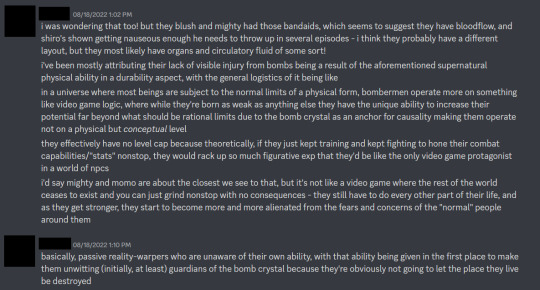
realized i don’t think i ever shared my rabbit hole of headcanons as for bombermen following standard shonen anime physics in a universe where, as the show goes on, it becomes increasingly clear barely anything else does, transcript under the cut
[image 1:
in general i give them heavy themes of malleability, honestly, which goes down to an unwell level with their nature as a whole stemming from another headcanon on the bomb crystal being an anchor for universal causality
since in the show bombermen are shown not only to have their bomb-creating abilities but highly-skilled ones, like mighty, the MA-units, and some of the shitennou, having supernatural physical ability compared to anything demonstrated by non-bomberman characters (with the closest we get being birdy, who still loses quickly to max)
my favorite example of those skills being mighty's flashstepping to the other side of the room just to touch misty's ears]
[image 2:
i was wondering that too! but they blush and mighty had those bandaids, which seems to suggest they have bloodflow, and shiro's shown getting nauseous enough he needs to throw up in several episodes - i think they probably have a different layout, but they most likely have organs and circulatory fluid of some sort!
i've been mostly attributing their lack of visible injury from bombs being a result of the aforementioned supernatural physical ability in a durability aspect, with the general logistics of it being like
in a universe where most beings are subject to the normal limits of a physical form, bombermen operate more on something like video game logic, where while they're born as weak as anything else they have the unique ability to increase their potential far beyond what should be rational limits due to the bomb crystal as an anchor for causality making them operate not on a physical but conceptual level
they effectively have no level cap because theoretically, if they just kept training and kept fighting to hone their combat capabilities/"stats" nonstop, they would rack up so much figurative exp that they'd be like the only video game protagonist in a world of npcs
i'd say mighty and momo are about the closest we see to that, but it's not like a video game where the rest of the world ceases to exist and you can just grind nonstop with no consequences - they still have to do every other part of their life, and as they get stronger, they start to become more and more alienated from the fears and concerns of the "normal" people around them
basically, passive reality-warpers who are unaware of their own ability, with that ability being given in the first place to make them unwitting (initially, at least) guardians of the bomb crystal because they're obviously not going to let the place they live be destroyed]
#fractions thoughts#mighty's whole conundrum about his potential for harm‚ fixation on strength‚ and feelings of profound isolation from others#combined with the original media the anime adapts in the first place#always struck me as meshing really well with the nature of the video game protagonist as an element of horror
6 notes
·
View notes
Text
So, given everything that's happened in recent hours, I thought I might give people who don't know about Gundam some stuff to learn about. Hopefully I can give a balanced and not-racist take like some people.
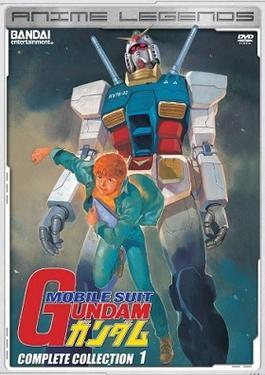
What is Gundam?
Created by Yoshiyuki Tomino with help by Yoshikazu Yasuhiko and animated by the studio Sunrise (currently Bandai Namco Animation, though I refuse to call them that), the original Mobile Suit Gundam released in 1979 to initially-limited success, though would gain popularity through a combination of fujoshis shipping the characters, the sale of plastic model kits referred to as "Gunpla" and a recut of the series into three compilation movies throughout the early 80's. And as of 2024 is the 66th highest-grossing media franchise of all time, beating out Scooby Doo, Minecraft and the Simpsons.
Also, I'm pretty sure it's what sparked Japanese sci-fi's obsession with O'Neill Cylinders.
The original anime takes place in the year 0079 of the Universal Century, where the Principality of Zeon: a nation composed of orbital space colonies declares a war of independence against the Earth Federation. This "One Year War" has already claimed half the human population by series start and is waged through the use of "Mobile Suits": bipedal mecha powered by a fusion reactor capable of effectively fighting out in the reaches of space.
Main character Amuro Ray is the son of a Federation engineer who lives in an out-of-the-way space colony, though soon finds his home under attack by a Zeon infiltration. After finding the secret Mobile Suit project his father was working on: the RX-78-2 Gundam, he fights off the Zeon invaders, though finds himself and a bunch of other kids conscripted by the Federation to fight the forces of Zeon aboard the ship the White Base. Throughout his journey, Amuro and the Gundam fight many battles against Zeon, including against their mysterious masked ace pilot Char Aznable.
The series was responsible for the codification (but not creation, people get this wrong all the time) of the "Real Robot" subgenre of mecha, where the robots were relatively more realistic and used as weapons of war as opposed to the more fantastical "Super Robot" subgenre pioneered by Mazinger Z and Getter Robo.
A major theme of the show, and the franchise as a whole is "War is bad", as demonstrated through this meme:
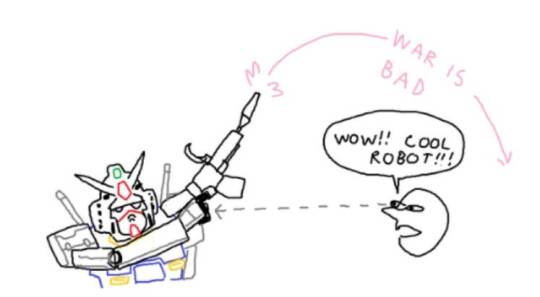
Yes, this is the original version of this meme format.
Anyway, Tomino, a renowned pacifist who grew up in the shadow of Japan's involvement in WW2 tried to use his platform as an anime director to try and tell a story that would get people to realise war's futility and brutality.
So I hear you asking, "That's nice and all, but what about the space lesbians who beat Destiel on their home turf?" Well, let's get into that.
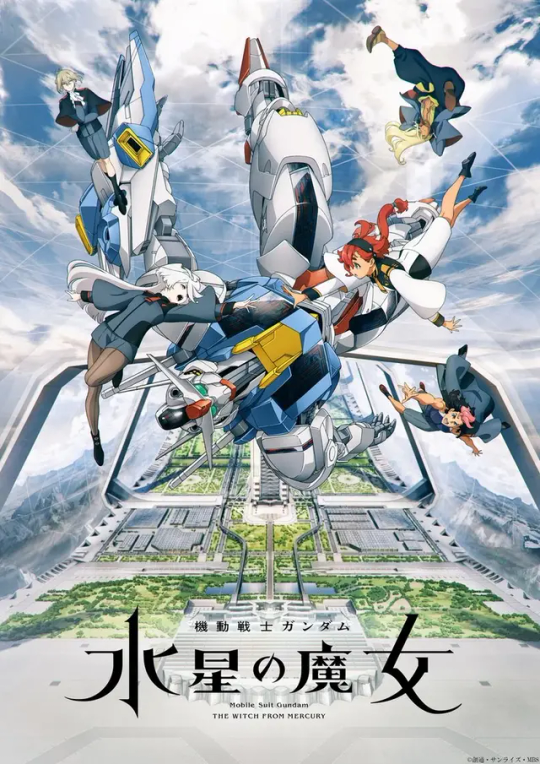
What is the Witch From Mercury?
Mobile Suit Gundam: The Witch from Mercury, or "G-Witch" for short is one of the more recent entries in the Gundam Franchise and a (very) loose adaptation of William Shakespeare's The Tempest. Set in the year 122 Ad Stella, the solar system is under the de facto control of the Benerit Group: a megacorporation with borderline-medieval internal politics that maintains a system of capitalism that benefits Spacians at the expense of those who live on Earth.
Main heroine Suletta Mercury enrolls at Asticassia School of Technology owned by the Benrit Group at the behest of her mother: CEO Prospera Mercury of the Mercury-based Shin Sei Development Corporation, and wins a Mobile Suit duel against a bully in her own MS: the Gundam Aerial. This however means she has now won the hand in marriage of daughter of the Benerit Group CEO: Miorine Rembran, beginning a series of consequences that shape the very political landscape of the solar system.
G-Witch was a massive hit, both critically and commercially. The first episode: the Witch and the Bride attracting record numbers for the studio and the Gunpla kit for the Aerial is currently the best-selling Gunpla kit ever.
Contrary to popular belief, G-Witch is not the first piece of Gundam media to feature a female protagonist. That honour would go to the 2002 Japan-only manga École du Ciel, nor would it have the first queer main character, which goes to 1999's Turn-A Gundam (and if you were to ask any fan of the series, they'd so it goes back to the very beginning). But it became notable for its lesbian representation in anime (in spite of Sunrise's attempts to downplay it, to the anger of the director, writer, producer, artists, animators, cast, fans and even their own parent company Bandai Namco who forced them to back off).
One thing I need to clarify: You don't need to have watched the original series to enjoy G-Witch. They're not even in the same continuity.
So if you're interested in the series and you've only watched G-Witch, I'll give out three recommendations for you all to enjoy:

Mobile Suit Gundam 00
Gundam 00 takes place in the year 2307 (the only series to use our own calendar), where the world is divided between three global superpowers: The Union of Free & Solar Nations (The Americas, Australia, New Zealand and Japan), the Human Reform League (China, South, East, Southeast and Central Asia) and the Advanced European Union (all of Europe, including all of Russia west of the Urals) who each control a space elevator near the equator and wage proxy-wars in Africa and the Middle-East over Earth's dwindling resources. This eventually culminates in the emergence of Celestial Being: a terrorist group consisting of Setsuna F. Seiei, Lockon Stratos, Allelujah Haptism and Tierria Erde, all of whom use powerful "Gundam" Mobile Suits and try to forcefully impose global peace on the Earth.
00 is pretty slow-paced and is more about the world than the individual characters, but said characters are really well-written, especially the characters from the three power blocs who are the de facto protagonists as they try to stop what are in their eyes a bunch of crazed terrorists preaching a hypocritical and incoherent ideology of "peace through force".
And to address the elephant in the room, this series is VERY post-9/11. Constant talks about terrorism, proxy-conflicts in the global south (especially the Middle-East), religious extremism, dwindling resources and the wars fought over them. While the franchise has always been political and of-its-time, you can just tell 00 was made in the mid-2000's. Again, it's good. But just something to keep in mind.

Turn-A Gundam
Turn-A Gundam is one of the weirder elements of the franchise for a myriad of reasons. Not the least of which being its unique setting taking inspiration from the famous sci-fi novel War of the Worlds.
In the Year 2345 of the Correct Century, human civilisation is at a level of technology reminiscent of the late-19th/early 20th centuries, save for the Moonrace on... well, the moon. As part of their queen Diana Soreil's plan to reintegrate both Lunar and Terran societies, several scouts are sent to the planet to set up their return to the planet. One such scout: Loran Cehack integrates into Terran society as a driver for the wealthy Heim family, though at a coming of age ceremony for the family's second daughter, a member of the Moonrace attacks the technologically-inferior Terrans. However, a mysterious mustached statue breaks apart to reveal a "White Doll": the Turn-A Gundam, allowing Loran to fend off the invaders. rest of the series becomes more of a mystery to how the supposedly-peace loving Moonrace could allow of such brutality.
The setting of the Correct Century timeline alone is one of the draws of Turn-A, though its excellent characters and compelling mystery also help a lot.
I do however have two warnings for people interested in watching it. The first is that this series was never dubbed. While it did receive an official sub in 2015, there still isn't a dub for the series. So if that bothers you, there's your warning.
The other is that there's a pretty big twist in the latter part of the series that while I will not spoil it here, it's such a big deal that I can't not mention it. It doesn't make any sense, and it actively detracts from not just the series, but the whole franchise. You'll know it when you see it. It doesn't ruin my enjoyment, but a lot of people don't like Turn-A for that alone.

Mobile Fighter G Gundam
Favourite entry. Don't care. It's peak.
In the Year 60 of the Future Century, war has been abandoned by the nations of humanity in favour of the Gundam fight: a quad-annual fighting tournament between Gundams representative of the countries of the world where the winner rules space until the next Gundam fight, all while leaving the Earth ecologically devastated in the fighting. Neo-Japan's Gundam Fighter: Domon Kasshu arrives on Earth seeking information on his older brother Kyoji, who killed their mother and led to their father's arrest before stealing the experimental Devil Gundam to Earth, beating up every Gundam Fighter in his way. However, he eventually learns of far more dangerous revelations about the incident.
G Gundam is to put it bluntly: bat-shit insane. And I love it. It basically took a look at the then-stagnating franchise in the wake of the wet fart that was Victory Gundam and said "I know what can save this franchise, Bruce Lee movies!" And it somehow worked.
Word of advice: watch it dubbed. Mark Gatha absolutely kills it as Domon every time, and puts just the right amount of ham into every line.
So yeah, that's some stuff on Gundam. This was a long post to write out. I'm gonna take a break now.
#gundam#sulemio#g witch#destiel#ao3topshipsbracket#msg#mobile suit gundam#mobile suit gundam the witch from mercury#tumblr top ship bracket#gundam suisei no majo#supernatural#the witch from mercury#witch from mercury#history lesson
269 notes
·
View notes
Note
hi hiiii i've been wanting to get into the mecha genre and the like, but im not exactly sure what to start with/where to start? I know theres not technically rules, but would you have any reccomendations for media to begin with? no worries if not, and thank you !! ^.^
I’m honored you’d go to me!
In terms of what to start with, it depends heavily on your personal tastes, so I’ll be including a range of series. Most of these are real robot, because super robot series can be very jarring for people who’ve never seen mecha before. I personally love super robot stuff, but it can be strange if you aren’t expecting a mech to pull out a giant top to hit pretentious bull-horned space princes with.
This is going under a cut for length!
If you’re looking for tragedy and horror, I have to suggest Space Runaway Ideon. While Tomino is most famous for his work on the Gundam franchise, Ideon is absolutely phenomenal. It often borders on Lovecraftian horror, and is famous for gruesome deaths and unrelenting tragedy. The gist of it is that a group of space colonists find a starship and a combining robot, and wind up in conflict with an alien civilization. As the war stretches on and the tragedies mount, it becomes clear that their wonder weapon, the Ideon, has a mind of its own.
Speaking of Gundam, the main timeline isn’t too unapproachable, and the standalone universes are all excellent starting points. I’m going to be giving a few of these, since Gundam series are ridiculously easy to access for English speakers— no having to dig through fan translations to find whatever has the least agonizing subtitle font here. Looking at you, Brave series.
The newest Gundam, the Witch from Mercury, is a wonderful starting point if you’ve not seen it already! It’s only twenty-five episodes, and while it pulls heavily from franchise history, it can be enjoyed without having seen a single prior Gundam.
It takes place in a future where humanity is split between Earth and space, with Earth being polluted and exploited by warmongering corporations, and space effectively being ruled by said megacorporations who are given the impunity to execute people. The first season primarily takes place in a school for the wealthy, which is effectively a training ground for future corporate executives, and a means to advertise their tech via mech duels. Everything in the school is dependent on one’s class, with even the dorms dependent on who sponsors your attendance.
The plot kicks off when our main character accidentally wins the hand of the daughter of the president of the largest conglomerate, as a political drama unfolds in the background.
It’s all on YouTube, and there’s a short story you should read between the prologue and the first episode, Cradle Planet. It’s on their official website, both in English and Japanese.
The original Mobile Suit Gundam holds up excellently, though the animation is rather clunky and dated. It’s a war story heavily pulling from WWII, following a child soldier who’s effectively forcibly conscripted when his home is attacked, and he hops in the main mech to defend civilians. It focuses on the horrors of war, and particularly soldiers’ PTSD. I’d personally suggest watching the three compilation movies and then circling back to the series proper if you liked what you saw— the compilation films cut out a lot of the fluff and make it a much more streamlined experience, but they also leave out a lot of lovely episodes and character moments.
Gundam the Origin, both the manga and the anime, are also wonderful beginners’ series. The manga is a retelling of the original series made by one of its creators, and expands upon it, giving neglected characters and storylines a lot more attention. The anime is an adaptation of a flashback arc, detailing the events leading up to the war in the original series, albeit with some timeline differences. It’s in my opinion the best place to start with Universal Century— while there are continuity differences, it’s a great primer for what Universal Centiry is at its core, a character-driven political drama and war story.
Obligatory recommendation for my favorite Gundam show, Gundam 0080. It’s a small-scale look at the tail end of a war from the perspective of a civilian child caught up in the mess when his home is used as a development center for the military. It’s a short little OVA, only six episodes, and doesn’t require much prior context for the rest of the franchise at all. It’s a very personal story focusing on a small cast of characters — a civilian child, a rookie soldier, and a test pilot — and their experiences with the war.
It’s best enjoyed with a burger.
If you’re looking for gritty military sci-fi, Armored Trooper VOTOMs is an excellent place to start. In this series, the mechs are walking coffins, with the outright referred to as “bottoms” because they’re considered the lowest of the low. It takes place during an uneasy truce between two warring nations, focusing on a man betrayed by his own side, hunted by both his former faction (and quite a few others) as he tries to discover the truth as to the mission that led to him being branded a traitor.
It is on the harder end of the sci-fi spectrum, so if you’re here for the ridiculous robots, it might not be to your liking.
If you’re curious about fantasy and shoujo-flavored mecha, Vision of Escaflowne is a phenomenal series. It’s an isekai, following a girl accidentally transported to another world by a brash prince on the eve of the destruction of his kingdom. From there on out it’s a mix of romance and political drama, with our heroes trying to thwart the machinations of an evil empire.
The mechs here are designed after knights, with utterly gorgeous designs and some really interesting setup mechanically-speaking— they’re magitek, and rather low-tech at that, with pilots seeing out of holes in the mech. Your enjoyment of the series will heavily depend on your fondness for shoujo romance and fantasy tropes, and especially love triangles. The movie adaptation has some fascinating piloting systems that skew close to body horror. While this one has manga, they’re generally not worth checking out.
If you’re looking for a mix of light-hearted fun and more serious action, the Patlabor show and OVA are essentially buddy-cop series taking place in a futuristic Tokyo, focusing on a department created to deal with mecha-related crimes. Both the OVA and series proper are a solid blend of fun, light-hearted character moments and tenser action. Our protagonist loves her mech like he’s a person, and it’s adorable. However, this one heavily depends on whether you like screwball police comedies.
The Patlabor movies, on the other hand, are densely political, examining the place of such technology in the world, and raises questions about the ethics of law enforcement and its use of violence to combat crime and terrorism, and the implications of using advanced military weaponry. They’re directed by Mamoru Oshii of Ghost in the Shell fame. These ones are pretty standalone, but if you’d like prior context, they take place in the same timeline as the OVA.
If you’re interested in mecha video games, I’m having a blast with Zone of the Enders: 2nd Runner! It’s got wonderful gameplay, and some really interesting mech designs. They’re themed after ancient Egyptian mythology, and the shape language of most of the mechs is very curvy and round, something you don’t really see often, giving it a very unique aesthetic. I haven’t finished it yet, however, so this is based only off the first chunk of story.
After a terrorist attack drags him into a conflict he thought he’d abandoned long ago, our protagonist is shot and left for dead. In a desperate attempt to save him, his body is connected to his mech as a form of life support— if he leaves it, or the mech shuts down, he dies. Seeing as the mech is what his enemies want, this leaves him no choice but to stay involved. The gameplay is quite energetic, the boss battles are fun, and just about every move and animation are designed to make you feel as cool as possible. It is a Hideo Kojima game, so keep that in mind going in.
While it’s a classic and often recommended, don’t watch Evangelion as your first mecha. It pulls very heavily from Tomino’s body of work, and I’d only suggest watching it after you’ve seen a show or two of his— especially Gundam or Ideon. Hell, watch an Ultraman or two first— that’s where the Christian imagery comes from. You’ll miss out on a lot if you go into it without prior context.
There’s a lot of mecha out there, but these are what I consider to be the most beginner-friendly. When it comes to banner franchises like Getter, Mazinger, or Brave— you can honestly pick any one of the shows to start with, as there’s no overarching continuity. Do some reading and pick whatever interests you! If you’ve got an hour or two to burn, there’s a retrospective on Getter Robo and its influence on the genre that’s worth watching even if you don’t plan to check out any Getter yourself.
I hope you find something you enjoy!
#alex.txt#based on your blog you seem to like darker stuff so that’s what I focused on with the recommendations#but I included a few lighter ones just in case#also! if anyone wants to suggest series in the replies please do
15 notes
·
View notes
Text
The bbeg of the Never After is Homogenization.
~beware my ramble~
The erasure and sanitization of stories that then get commodidified and distributed on mass to be the "right version" of the story that then become almost the "only version" of the story. Erasing centuries of culture and influence, beliefs and experiences, real world problems that these stories portray, and replacing them with the most marketable version.
And in a way, the stories themselves end up cannibalizing their different versions to fit in as the "right version" or just the nature of time combining and losing stories over time.
Like all of the worlds and groups are from folklore. Stories that have been told over and over again, that change to fit the world and the message that needs to be conveyed. Folklore isn't supposed to have a "right version". Much like weaving, the basics of cloth weaving are very similar all over the world but what is made with those techniques, the styles and additional learned cultural practices, can be so very different or so weirdly similar you wouldn't believe they came from different places across the globe from one another.
But in our more modern era where all of our stories feel factory made, we know where they come from, they aren't "folk" in so so many ways. The closest we get to folk media these days are MEMES. They are passed around and shared, often the original poster gets lost or is not common knowledge, have real world effect and meaning, and exist mainly in a specific group culture (internet culture, tumblr culture, etc) To quote my old professor "All folklore are memes, but not all memes are folklore" Think Creepy pasta vs horror movie. Internet legends, "send to 10 friends or blank will happen to you". BLORBO is a folk term. Slang in general I believe is counted as folk based. FANFICTION IN MANY CASES IS CONSIDERED FOLKORE BTW and I find that sooo delightful.
And whats kills memes faster than anything? The commodification of it! When companies go "ooo that'll make us some money" and take it and sell it back to us for profit. Often these days it feels choc full of advertisements and versions of propaganda.
In this era of Disney overlords defining the genre of fairytales to the point that they have set the standard for what is cannon for certain stories they tell. Like the first time I found REAL fairytales I was like 9 and cried myself to sleep because they got so dark, and how were we (me and my mom) to know with how we expected the disneyfied version of the story. Ironically it could be said that the Grimm's Brothers are guilty of the exact same thing in their era, commodifying and centralizing their versions of the stories.
I could also get into the demonization of tropes (lookin at you cinema sins) because tropes are the building blocks of story telling. Common themes and elements that we recognize because they MEAN something to us.
But, and I know what site I'm on, fanfiction is a great example of taking those stories and in some ways turning them into folklore. Its not because we believe we can tell the stories better, in most cases at least, but rather that we take the elements, characters, ideas that we connect to that we love and mean something to us, and make play with it because we have our own stories to tell.
The Homogenization and restricting of what counts and what doesn't ignores the importance of the differences in the stories.
Ylfa's "right" version is a lot like how the animals describe being part of Aesop's fables. There's no nuance. There's no room for change and adaptation. And in a world ever changing, even in bad ways, you have to change to make it work. Even Gerard's "Sometimes you have to be scary in a scary world" touches on this. The barebones basic Little Red Ridinghood is unrealistic in its simplicity. And also kinda blocks out how that whole experience would still be heavily traumatic for anyone (being attacked by a wolf and seeing your granny crawl out of the wolf's destroyed body ain't pretty) , even if it is better than the experience in this life. Meanwhile the more they die, the more versions of their stories get cannibalized and lost to time. Much like how folklore and stories die when culture dies.
Also Stepmom literally consumes story elements into non existence.
Nom Nom
#istg if the Grimm's Brothers don't show up at some point I will send Brennan a strongly worded folklore obsessed letter#thank you very much#dimension 20#d20#d20 spoilers#d20 nva#d20 neverafter#dimension 20 neverafter
18 notes
·
View notes
Text
Disney Social Media Moms Celebration 2015 — VoicePlay live performances
Starting in 2010, Disney World hosted annual gatherings of bloggers that served as a combination of networking opportunities for attendees and promotional events for Disney's resorts. Each year, a couple hundred moms who were active on various social media platforms were invited to bring their families to the park for a long weekend (at a significant discount), connect with each other, and experience the amenities. The 2015 SMMC event took place over Mother's Day weekend, and on their special day, they were treated to a lively performance by VoicePlay.
youtube
Parents of young kids are used to their children watching the same movies over and over. But what if you could get the whole story of an animated feature in a fraction of the time? And what if it was sung and acted out for you by five goofy dudes? Well, then you'd get this.
Details:
title: The Story of Rapunzel
original songs / performers: [0:26] "When Will My Life Begin" from Tangled; [1:14] "Mother Knows Best" from Tangled; [2:30] "All About That Bass Prince" by Meghan Trainor (parody); [2:42] "I've Got a Dream" from Tangled; [3:23] "Bad Day" by Daniel Powter; [3:58] "Healing Incantation" from Tangled; [4:50] "Best Day of My Life" by American Authors; [4:58] "You'll Be In My Heart" from Tarzan; [5:22] "When Will My LIfe Begin (reprise 2)" from Tangled
written by: all songs from Tangled by Alan Menken & Glenn Slater; "All About That Bass" by Meghan Trainor & Kevin Kadish; "Bad Day" by Daniel Powter; "Best Day of My Life" by American Authors, Aaron Accetta, Shep Goodman & James Shelley; "You'll Be In My Heart" by Phil Collins
arranged by: VoicePlay
performance date: 10 May 2015
My favorite bits:
"I'll give you a hint: it's Rapunzel." "I love this story!"
newly beardy Earl playing the ingenue heroine
Eli touching his freshly shaved noggin on the final ♫ "brush my hair" ♫
Tony going full gaslight-girlboss during "Mother Knows Best"
"You're embarrassing me." 😒
Layne being cast as the first of many animal sidekicks to come, but at least getting some scritches during "I've Got A Dream" 🐴
Geoff replying to being stabbed with a mild "Ooh, that really hurts," then continuing to sing his part while lying on the floor
"Hey, quit horsing around!" Deploying dad jokes at the event for moms before any of them were actually dads.
a lovely final section of pure singing

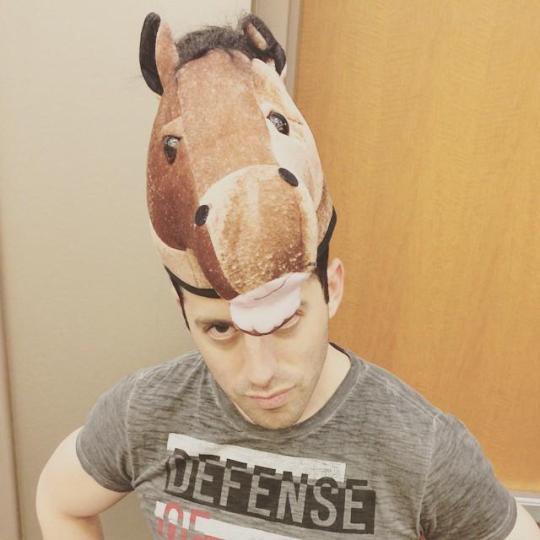
Trivia:
VoicePlay later included songs from Tangled in two videos from their "Aca Top 10" series. An excerpt from "When Will My Life Begin?" was in their "Disney Heroes" countdown, and "Mother Knows Best" was part of "Disney Villains".
"You'll Be In My Heart" from Tarzan was also part of the the "Aca Top 10 — Disney Heroes" video.
Rapunzel and Mother Gothel have more recently appeared in PattyCake's "Princess Academy" and "Villains Lair" series, respectively.
.
youtube
Performing at Disney World provided a perfect opportunity for the guys to bust out their celebration of the company's Broadway adaptations in a live setting. Especially since the event was partly a promotion for the various Disney travel destinations.
Details:
title: aca-Disney medley
original songs / performers: [0:09] "Kiss the Girl" by Titus Burgess as Sebastian in The Little Mermaid (2008); "All About That Bass" by Meghan Trainor; [0:42] "A Whole New World" by Adam Jacobs & Courtney Reed as Aladdin & Jasmine in Aladdin (2014); "Rude" by Magic!; [1:11] "I Just Can't Wait to Be King" by Scott Irby-Ranniar, Geoff Hoyle, & Kajuana Shuford as Simba, Zazu, & Nala in The Lion King (1997); "Trumpets" by Jason Derulo; [1:52] "Seize the Day" by the cast of Newsies (2012); [1:58] "Arabian Nights" by James Monroe Iglehart as the Genie and the cast of Aladdin (2014); "Fireball" by Pitbull, featuring John Ryan
written by: "Kiss the Girl" by Howard Ashman & Alan Menken; "All About That Bass" by Meghan Trainor & Kevin Kadish; "A Whole New World" by Alan Menken & Tim Rice; "Rude" by Magic!, Adam "Messy" Messinger, & Alex Tanas; "I Just Can't Wait to be King" by Elton John & Tim Rice; "Trumpets" by Jason Derulo & Jon Bellion; "Seize the Day" by Alan Menken & Jack Feldman; "Arabian Nights" by Alan Menken & Tim Rice; "Fireball" by Armando "Pitbull" Perez, "John the Blind" Ryan, Andreas Schuller, Ricky Reed, Joe Spargur, Tom Peyton, & Ilsey Juber
arranged by: VoicePlay
performance date: 10 May 2015
My favorite bits:
Tony and Earl looking like a little gossipy clique in the corner
everyone turning toward Layne to appreciate his first percussion riff
♫ "with quite so little hair" ♫ Wait, that's backwards.
the reverb on Earl's "Roar!" (Good job, Paul.)
Geoff's growl as he hands the lead back to Eli
Layne pulling off that super fast patter live, and Eli taking over the beatboxing while he does it
that big finish
Trivia:
VoicePlay originally created this mashup medley as part of Disney On Broadway's 20th anniversary celebration.
I'm not sure why Eli sang "A Whole New World" instead of Tony on this occasion. It could be that months of touring followed almost immediately by a cruise had left Tony feeling not quite up to belting those big notes on that day.
.
youtube
Any group of people on a long car ride can get on each other's nerves, be it a family with parents and children, or a touring vocal quintet (who are basically a bunch of big kids). And this number is always a hit with audiences of all ages.
Details:
title: Road Trip
original songs / performers: [1:19] "Tiptoe Through the Tulips" by Tiny Tim; [1:38] "Orinoco Flow" by Enya; [1:55] "Cum On Feel the Noize" by Quiet Riot; [3:01] "Big Shot" by Billy Joel; [3:14] "I Wanna Rock" by Twisted Sister; [3:22] "Voices Carry" by ’Til Tuesday; [3:40] "Shout" by Tears For Fears; [3:56] "Why Can't We Be Friends?" by War; [4:06] "That Smell" by Lynyrd Skynyrd; [4:50] "Hard to Say I'm Sorry" by Chicago; [6:16] "We Just Disagree" by Dave Mason; [6:36] "Royals" by Lorde
written by: "Tiptoe Through the Tulips" by Al Dubin & Joe Burke; "Orinoco Flow" by Eithne "Enya" Pádraigín Ní Bhraonáin & Roma Ryan; "Cum On Feel the Noize" by Noddy Holder & Jim Lea; "Big Shot" by Billy Joel; "I Wanna Rock" by Dee Snider; "Voices Carry" by Robert Holmes, Aimee Mann, Michael Hausman, & Joey Pesce; "Shout" by Roland Orzabal & Ian Stanley; "Why Can't We Be Friends?" by Papa Dee Allen, Harold Ray Brown, B.B. Dickerson, Lonnie Jordan, Charles Miller, Lee Oskar, Howard E. Scott, & Jerry Goldstein; "That Smell" by Allen Collins & Ronnie Van Zant; "Hard to Say I'm Sorry" by Peter Cetera & David Foster; "Royals" by Ella "Lorde" Yelich-O'Connor & Joel Little
arranged by: Geoff Castellucci
performance date: 10 May 2015
My favorite bits:
the gently animated backdrop
Tony taking a selfie while Earl desperately tries to get Layne to let him in the car
the little "gotta wake up" noises Eli makes
the front seat getting weirdly intense about Enya
♫ "We'll get WILD, wild, okay." ♫
Earl shouting the first "Rock!" with such power, then mumbilng the second with his head tipped so far back and away from the mic
Tony putting his finger so close to Eli's face that he bats it away (As a fellow glasses wearer, I understand that instinct.)
the camera being at the right angle to show Earl letting one go several seconds before the other guys react
Eli and Tony continuing to silently bicker, even from the far corners of the stage
Geoff and Layne leaning away from Earl's extra-long hairspraying
both Earl and Eli asking to change to station one last time, only to be rebuffed
Trivia:
VoicePlay made a professionally filmed version of this medley / skit during the 2014 Sing-Off tour.
3 notes
·
View notes
Text
The design of SPOP She-Ra
The original transformation to be clear.
A still controversial topic, if I think needlessly so.
Indeed most even overlook what ar the actual inspirations for the costume, which are public for some time, as even seen in a released production description of the design:

(A close to final design, with some slight differences like a different Sword of Protection, and more detailed bracers)
The military elements are more obvious when mentioned, with it becoming clear the design is meant to invoke the Filmation She-Ra design, combined with a historic (or ceremonial) military uniform:
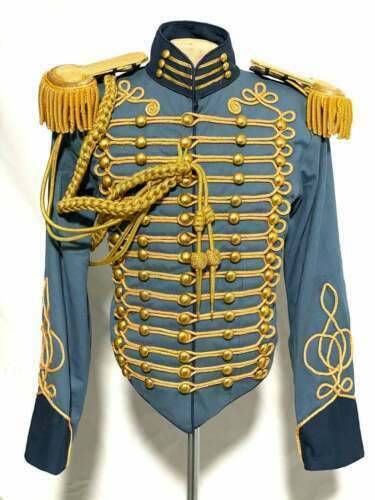
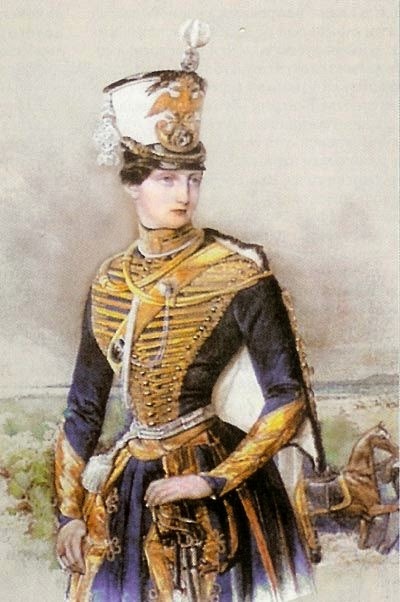
(Olga Nikolaevna of Russia, Grand Duchess of Russia, Queen consort of the Kingdom of Württemberg, in a Hussar uniform, painting from early 1840s, unknown author.)

(photo of Mária Lebstück, female Hussar officer from the time of the Hungarian War of Independence of 1848 and 1849)
Some also noted some similarities to a knight's/crusader's armor, but it's lesser than the military aspect, and the knight element is more emphasized in Mara's transformation:

All of this makes sense, as Adora did see herself as a soldier when she first transformed, and even some after it.
Shorts are also indeed practical, and worn by many fictional female warriors and fighters..including Wonder Woman in her debut (her first bell-bottom shorts are often mistaken for a skirt).

(Sensation Comics #2, 1942)
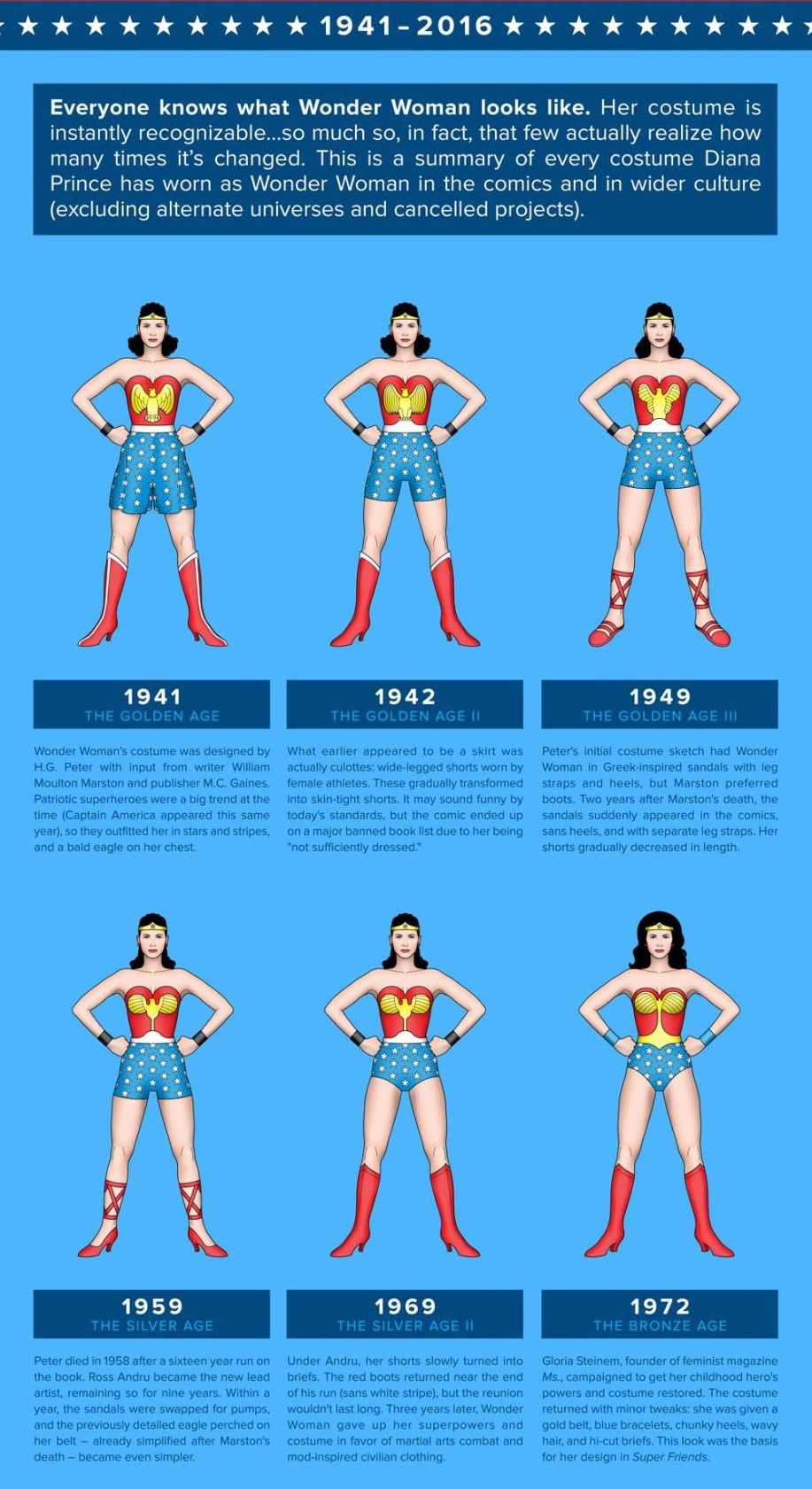
Which is fitting, as Wonder Woman is one of the inspirations for She-Ra in the first place (if not the only).
It's also pretty popular in Japanese made media:

(Ravness Loxaerion from PSP re-release/remaster/basically remake of Tactics Ogre: Let Us Cling Together)

(Utena Tenjou from Revolutionary Girl Utena)

(Leinas Rockbruise from the anime adaptation of the Overlord light novel)
(These are examples of shorts being used, rather than inspirations. Well, there is a bigger possibility Utena and/or Wonder Woman were some inspiration).
In terms of other version's of She-Ra design being an inspiration (outside of the Filmation cartoon design), well, there are a few possibilities.
Another inspiration could be the 2017 She-Ra statue (by Sideshow). Especially that Nate Stevenson owns it, and quite likes it:
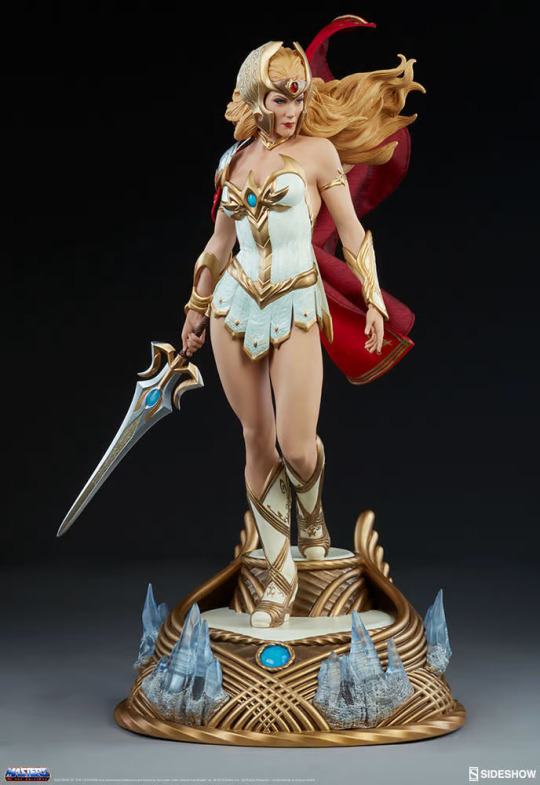
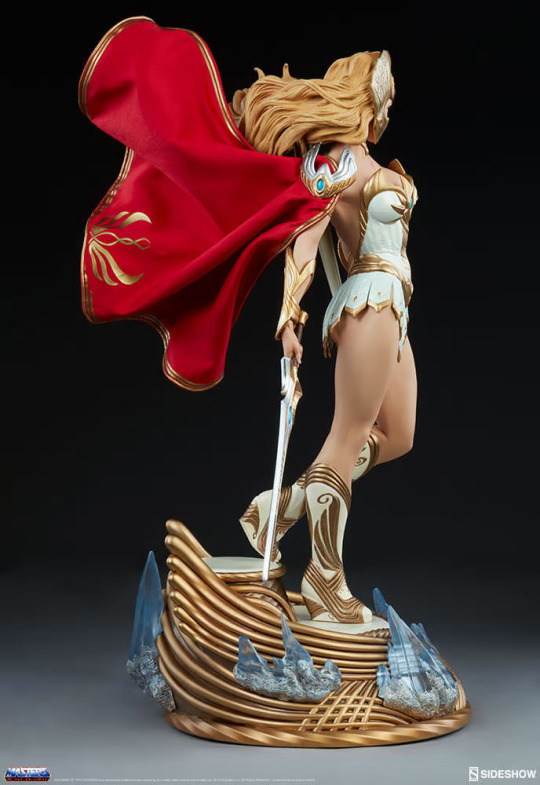
As we see they share a very similar symbol, it's placement on the chest and connecting to the belt. As well having extremely similar boots and a pauldron analogous to SPOP She-Ra's epaulettes. The bracers also have some similar elements, if more with overall shape, if not exact design, otherwise having the solid gold design of the classic Filmation design. (if the late concept being even more similar).
Buuut, and another source of inspiration, might be Filmation's own concepts for She-Ra:

Here were see an early Filmation design of She-Ra, who has a very similar symbol to SPOP She-Ra and the statue.
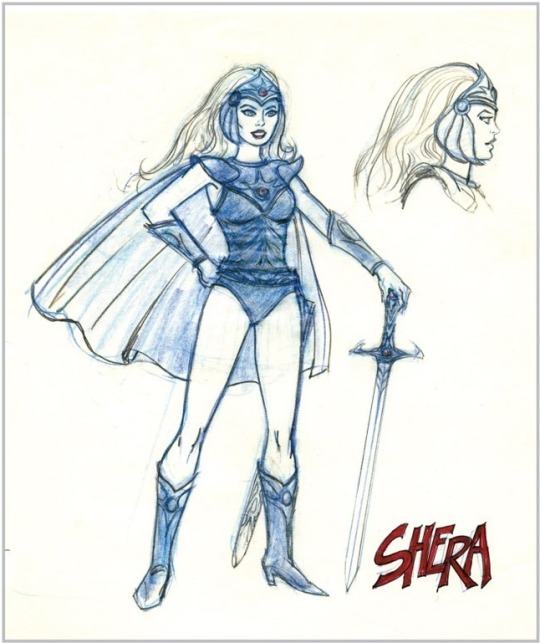
Here we see a Design for She-Ra a more covered, and seemingly armored torso. She also has pauldrons/epaulettes.
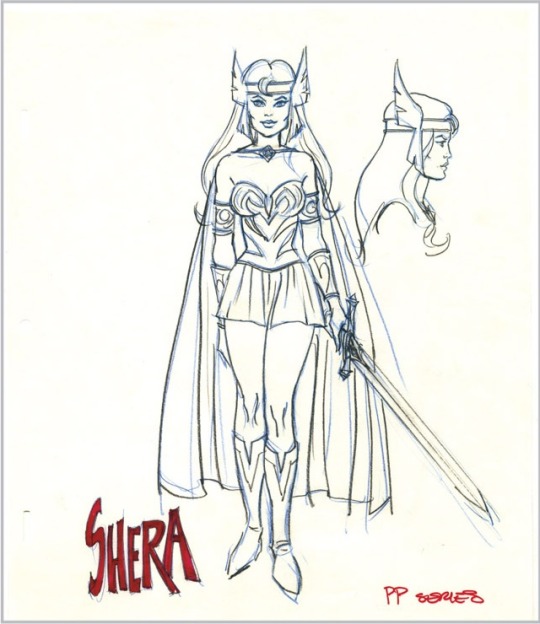
And here we see a simpler crown/diadem, quite similar to the latter SPOP one.
And Adora own design was seemingly inspired by her unused/prototype Filmation design:
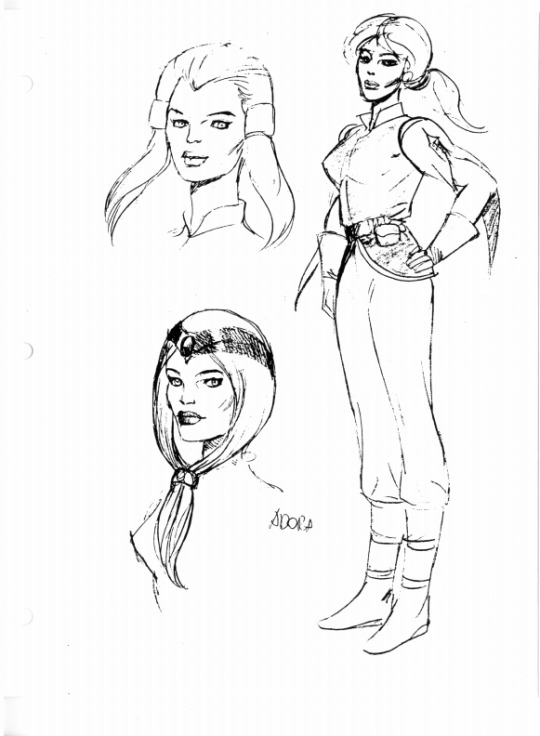
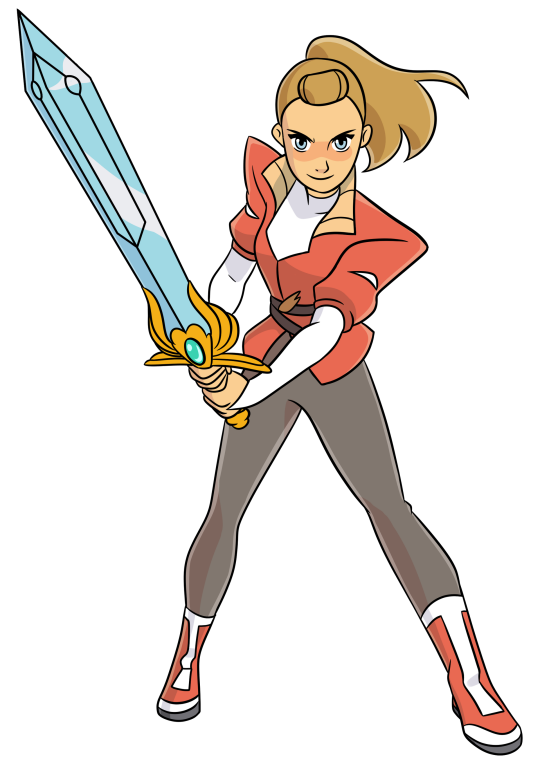
So there is a real possibility these were also an inspiration.
#she-ra#shera#she ra#spop#motu#masters of the universe#design#controversy#inspiration#military#uniform#military uniform#hussar#history#mara#wonder woman#shorts#golden age comics#sideshow collectibles#filmation she ra#classic she ra#concept art#unused#adora#filmation motu#filmation#female warrior#utena#sideshow#statue
42 notes
·
View notes
Photo


Honestly, nothing stands out to me more, still, as how much better all of the Star Wars movies are on Tumblr because of the things the fandom saw there, even if it wasn’t on purpose, and just underlined things to the point of making such better movies in their heads than the prequels and sequels actually were.
People saw little things, like the hints of Anakin in Ben and all of it made so much more sense to them and the movies worked more for them than anyone else.
I saw The Last Jedi in theaters twice opening week and it’s my favorite thing because it still has one of the most stunning scenes ever to make a theater full of people go dead silent in awe... but it’s hated by several huge Star Wars fans I know because it did things they didn’t like or expected, but I see the hints and references to things far beyond the movies that Rian Johnson pulled from because he’s a huge EU nerd the way a lot of us are.
And that seems to be the problem. Everyone has their own Star Wars. The one they grew up with. The version that was in their head because of their specific combination of the first movies they saw and the specific tie-in media they had.
Like, let’s be real. The Disney movies aren’t nearly as bad as they’re made out to be most of the time, with all the largest problems resting squarely on the overcorrection that was Episode 9, but I think it’s worth underlining as well just how much of Star Wars is loved in spite of - and in some places because of - its faults. The prequels are a mess, the sequels go from mid to great to trashfire, and all of this isn’t even new considering the places things went in RotJ.
We’re trained on the expanded universe/Legends continuity, the tie-in animated series, the video games, so much additional and corrective lore, that really, the Star Wars in our heads IS Star Wars.
And I think the thing that really hurts it the most is how much all the best parts were damaged by the really loud “fans”, from the horrible treatment of cast members to the hideous overreaction that made Ep 9 to, of course, the burnout it all gave to George Lucas.
I want nothing more than a new Star Wars, from scratch. Something made with the spark the original movie had, and I just don’t think it ever will happen. The few big scifi films that get made are adaptations and most just don’t get people into theaters, which is the only metric that will get any more made.
I don’t really... have a point here. I just wish Star Wars wasn’t quite so... messy. Not even in terms of its story or the media made for it, but in terms of the people. These movies and stories have always been a bit trash. But it’s our trash. My trash. We found something in it we loved and it drives me nuts more and more every year that it turned into so many problems instead of what it used to be, back in the years especially before and around the prequels.
The way I remember it in people’s little author’s notes in their fics and fan videos. But maybe it’s just what I remember, same as the Star Wars I specifically grew up with.
“Thank you, Uncle George, for letting us play in your toy box.”
#ranting#star wars#I guess this is my roblox_oof#disney channel logo moment#I still appreciate every ounce of effort put into this weird misshapen world#and its two continuities#from Uncle George#to Marcia Lucas' brilliant editing#to all the actors#to the video games#to the wild as shit novels#to all the people making lightsaber fights all these years online#to everyone who added life to this weird galaxy far far away#there's value in it#it's all art#and I hope it still keeps some of us afloat#May the Force be with you#always
3 notes
·
View notes
Text
Bomber Men The Legacy and Impact on Pop Culture and Society
Bomber Men The Legacy and Impact on Pop Culture and Society
Bomber Men, often associated with the iconic video game series "Bomber man," have made a significant impact on pop culture and society since their inception. Developed by Hudson Soft and first released in 1983, the game introduced players to a unique blend of strategy, puzzle-solving, and explosive action. Over the years, Bomberman has evolved, spawning numerous sequels, adaptations, and even a dedicated fan base. This blog explores the legacy of Bomber Men, their influence on various media, and the reasons behind their enduring popularity.

The Origins of Bomber Men
The original "Bomberman" game was a simple yet addictive maze-based title where players controlled the titular character, navigating through levels by placing bombs to destroy obstacles and enemies. The game's core mechanics revolved around strategic bomb placement and timing, making it a hit among gamers seeking a blend of action and puzzle-solving.
Hudson Soft's creation quickly gained popularity, leading to multiple sequels and adaptations across various gaming platforms. The Bomberman franchise became synonymous with fun, family-friendly entertainment, thanks to its colorful graphics, engaging gameplay, and memorable characters.
Evolution of Bomber Men in Video Games
As technology advanced, so did the Bomberman series. Each new installment introduced innovative features, improved graphics, and expanded gameplay mechanics. From 2D pixel art to 3D environments, Bomberman adapted to the changing landscape of video games while retaining its core gameplay elements.
Key Milestones in the Bomberman Series
Bomberman II (1991): Introduced new gameplay elements, such as different types of bombs and power-ups, enhancing the strategic depth of the game.
Super Bomberman (1993): Brought the series to the Super Nintendo Entertainment System (SNES), featuring improved graphics, multiplayer modes, and larger levels.
Bomberman 64 (1997): Marked the series' transition to 3D, offering a new perspective and more complex level designs.
Bomberman Live (2007): Took the franchise online, allowing players to compete against each other worldwide.
Super Bomberman R (2017): Revitalized the series for modern consoles, combining classic gameplay with updated visuals and new features.
Bomber Men in Pop Culture
Bomber Men's influence extends beyond video games, permeating various aspects of pop culture. The character's distinctive design—a small, white-suited figure with a helmet and an antenna—has become iconic, recognized by gamers and non-gamers alike.
Television and Movies
The success of the Bomberman series led to animated adaptations, including a Japanese anime series and several television specials. These adaptations helped introduce the Bomberman universe to a broader audience, further cementing its place in pop culture.
Merchandise and Collectibles
Bomberman's popularity also translated into a wide range of merchandise, from action figures and plush toys to clothing and accessories. Collectors and fans of the series can find an array of Bomberman-themed products, showcasing the character's lasting appeal.
The Impact of Bomber Men on Society
Beyond entertainment, Bomber Men have had a notable impact on society, particularly in the realms of technology and gaming culture. The series has influenced game design, multiplayer mechanics, and even esports.
Influencing Game Design
The strategic gameplay of Bomberman has inspired numerous game developers to incorporate similar mechanics in their own titles. The concept of using bombs or other tools to navigate and solve puzzles can be seen in various games across different genres.
Promoting Multiplayer Gaming
Bomberman's multiplayer modes have been a significant factor in the series' success. The competitive and cooperative gameplay options have made it a staple at gaming parties and events. Bomberman's emphasis on social interaction and teamwork has contributed to the growth of multiplayer gaming as a whole.
Esports and Competitive Play
The Bomberman series has also found a niche in the world of esports. Competitive Bomberman tournaments have been organized, showcasing the game's strategic depth and the skills of its top players. This has helped to elevate Bomberman from a casual party game to a respected competitive title.
Schulte Supply and the Enduring Popularity of Bomber Men
The enduring popularity of Bomber Men can be attributed to their timeless appeal and the continued support from fans and companies like Schulte Supply. As a provider of gaming products and accessories, Schulte Supply has played a crucial role in keeping the Bomberman legacy alive.
Schulte Supply's Contribution
Schulte Supply offers a wide range of Bomberman-related products, from classic game re-releases to exclusive merchandise. By catering to the needs of Bomberman enthusiasts, Schulte Supply ensures that the beloved series remains accessible to new generations of gamers.
Community Engagement
Schulte Supply also fosters a sense of community among Bomberman fans through events, tournaments, and social media engagement. By providing a platform for fans to connect and share their love for Bomberman, Schulte Supply helps to sustain the series' popularity and relevance.
The Future of Bomber Men
As the gaming industry continues to evolve, so too will the Bomberman series. The potential for new games, technological advancements, and innovative gameplay mechanics ensures that Bomber Men will remain a beloved part of gaming culture for years to come.
Upcoming Releases
Fans can look forward to new Bomberman titles and updates, as developers continue to explore fresh ideas and concepts. Whether through traditional console releases, mobile games, or virtual reality experiences, Bomberman is poised to continue its legacy of entertaining players worldwide.
Expanding the Bomberman Universe
The potential for expanding the Bomberman universe beyond video games is vast. New animated series, movies, and even theme park attractions could bring Bomberman to an even wider audience, ensuring that the character's impact on pop culture remains strong.

Conclusion
Bomber Men have left an indelible mark on the world of video games and pop culture. From their humble beginnings in the early 1980s to their continued relevance today, Bomber Men have captured the hearts of millions. The series' enduring popularity is a testament to its timeless gameplay, iconic design, and the support of dedicated fans and companies like Schulte Supply.
As we look to the future, the legacy of Bomber Men will undoubtedly continue to grow, inspiring new generations of gamers and leaving a lasting impact on the world of entertainment. Whether you're a long-time fan or a newcomer to the series, the world of Bomber Men offers endless excitement, challenge, and fun.
#succession#excess supply#bomber men#across the spiderverse#utility gloves#supplyon#donald trump#watermeter#gripgloves#subsurface instruments
1 note
·
View note
Text
How do you make an YouTube Reaction Video
Reaction videos can be helpful to get your channel up and running and help keep it running. The only thing you have to do in order to make reaction videos is download the YouTube original video and record your reaction. Then, merge the videos using a program like Adobe Premiere Pro online or similar. These are the steps you need to take in order to make reaction videos.

To create a reaction video make a reaction video, you must search Youtube
If you want to make a reaction video, it's important to use extreme reactions. It is possible to react to an especially violent situation by looking for videos. Utilize facial expressions, body speech and language to express your feelings. Also, keep your reaction positive. Similar principles must be applied when you record the video.
Reaction videos are very popular and can be a great way to express your emotions. You can make these videos by using any type of video. Many of these videos are easy to create and are available on YouTube. You can also use any type reaction video. It is important to match the time and license the videos correctly. To make your reaction video, you might need to locate the YouTube video that displays a reaction to something.
When you've finished the reaction video you want to record, be sure you take it in a quiet location and in a well-lit area. Screen recorders can be used to remove background noise. It is also possible to capture the video on a sunny, bright day. Professional editing tools are readily available if you're looking to make your reaction video appear more professional. You can download the Youtube video that you are reacting to. This lets you combine your reactions to the videos, and add captions and effects. Once you're finished, upload your video to YouTube
If you're budget-conscious, Adobe Premiere Pro is a good choice.
Adobe Premiere Pro is an advanced video editing software with a variety of options. It allows you to import a variety of media files. You can also add transitions and elements to your video. Adobe Premiere Pro offers many presets to add effects, colors, and transitions effects. It includes templates for end cards along with lower thirds and side-information.
Adobe Premiere Pro, a desktop-based video editing program that is popular on both Mac and Windows, is Adobe Premiere Pro. It comes with 100GB of cloud storage as well as a multitude of plug-ins for creating effects. It can also create VR videos or record audio tracks.
Adobe Premiere Pro has an impressive reputation for being a top-quality video editor. Even beginners can create professional-quality videos with its features. It offers a vast range of tools and options, including the ability to trim your videos in an adaptive manner and a composite-shot enhancement tool. After Effects animation software is available if you want to add animation or other features to your video.
Online resources for editing videos
YouTube allows you to edit your reaction videos using numerous online tools. These editing softwares are user-friendly and allow you to edit your videos. The apps let you edit videos privately. This is helpful if your reaction videos are not as well-known as you'd prefer.
A great reaction video should be visually attractive. It should include the appropriate sound effects and facial expressions. tiktok to mp3 It must be entertaining and relevant for viewers. Reaction videos are extremely popular with popularity and have a huge audience. These videos are difficult to make with conventional video editors.
First, ensure that your background is good. It must be engaging and include a place like an area with a green screen or room. This is essential as viewers will prefer professional videos to amateurs. Then, you need decide which video to react to. It is best to react to a trailer for a film or a stand-up routine.
Reactions to original video can be recorded
Make sure you use extreme reactions in your YouTube reaction videos. Be sure to include them in the most crucial scenes. Your facial expressions as well as body language are all important instruments to convey your emotions. It is also possible to record multiple takes so you can add more scenes later on.
Reaction videos should be tailored to the audience. The REPLAY channel video has been viewed more than 31,000,000 times. It shows different participants with their reactions recorded in real-time.
Before you begin creating a reaction video select something is likely to trigger powerful reactions. Make sure you capture both your face and your screen since if you just record one, you'll be missing part of the video. The camera should be placed close enough to see the face of the subject but away enough that it is clear that you are reacting to the video.
Once you've made your reaction video you will be required to upload it to YouTube. If you're using a smartphone you can upload your video via the mobile app. Another option is to use an editor for video on your desktop that is integrated into YouTube. To upload your video to YouTube, link your account to the video editor and then upload your video.
Add video 1 as a picture-in-picture in video 2.
You can use the free video editor EaseUS to add images or video into your video. The first step is to import the video to the editor's media area. Then, you can press the right-click button to include the video in the timeline. It should be added prior to and after the video within the "Video" as well as "PIP" tracks.
Once you have finished you can begin making edits to the video. You can cut the video or image and place it at either the upper or lower end of the video. After this is done your video will be transferred to YouTube or any other social media sites. This takes only three minutes.
You can also add music to your video. YouTube plays the soundtrack after the video is uploaded, so be sure you turn it on before you upload it. To include a soundtrack to your video, tick the box "Enable privacy enhanced mode". This will limit the ability of your video to track website visitors. Copy the embed code onto your clipboard.
Upload new video to Youtube platform
YouTube provides a variety of ways to make a reaction video. First, open your new video. Once it is loaded, click on the Camera icon. The Camera icon will allow you to select the location where the camera will be placed, and you can begin recording your reaction. There are many sounds effects that you can apply to enhance your video.
Reaction videos are an excellent method to influence viewers' behaviour. They can raise perception of a brand new TV show. They also enhance their appreciation for the content. Reaction videos typically include commentary analysis, speculation, or analysis. A thoughtful response video will draw viewers in and encourage them to return to the video.
If they don't include copyrighted material, reactions videos aren't considered to be theft. If you make use of someone else's video, make sure you credit them. This will help to promote the creator of the content. If you're unsure of the legality of using someone else's video, contact the video's creator and obtain their permission.
Put ads on your video to make it more profitable. You will not only be the money when people click on your advertisements and click through them, but you also can make use of adverts to convince them to subscribe to your channel. Another option is to include an affiliate link to your content description.
1 note
·
View note
Text
Coding For Kids: What is Scratch?
Programming languages are becoming increasingly significant since the use of computer systems has permeated every aspect of our lives. For the foreseeable future, it is expected that knowing at least one programming language will be necessary to create new products in every industry. By developing their technology literacy, children who begin learning to code at a young age take the lead and actively participate in the future field they choose to pursue. Don’t worry if you want to provide your child every opportunity to participate fully in society tomorrow but aren’t sure where to begin. The programming language Scratch is an excellent place to start for that.
What is Scratch?
The MIT Media Lab created the block-based visual programming language Scratch for kids ages 8 to 16. It draws inspiration from the Logo program created by Seymour Papert, a mathematician and computer scientist who served as one of the lab’s original staff members. The graphical user interface of Scratch programming makes the process easier to understand for children, who may initially find it confusing and difficult to comprehend. Through the program, they develop a variety of games, animations, and interactive tales while learning the fundamentals of coding in a gamified manner.
Not only is Scratch a straightforward programming language, but it also has an online community. Kids can use their personal accounts to share the projects they’ve created with other users, comment on one another’s projects, and even recreate them by creating arrangements on one another’s creations. Kids have the chance to study and create collaboratively and interactively. There is also Scratch Jr., a younger audience (ages 5 to 7) version of Scratch with complete visualization.
How Does Scratch Work?
Scratch operates on the same principles as LEGO blocks. You can issue commands by putting one graphic block inside another. You must arrange blocks correctly to issue a suitable command.
The cat image from their logo is the first thing you see when you launch Scratch. The default Scratch sprite is a cat image, which you can modify as you choose later. The primary Scratch feature for which we create programs is the sprite. We create the sprites by coding them in blocks. In this regard, sprites are similar to the objects in any software.
There are colored blocks, and each color has a unique purpose. For instance, you can use blue blocks to move sprites, purple ones to alter their look, and pink ones to make them talk. The outcome depends on the sequence of the blocks since they fit together like jigsaw puzzle pieces.
What Can Kids Do with Scratch?
Scratch allows students to experiment with a wide variety of combinations because of its adaptable environment. Kids can conduct experimental investigations by using all of their imaginations because they are not required to follow a set curriculum. Platform games, riddles, animations, and interactive stories are just a few of the things that they are capable of developing. You may learn more about the different projects by studying the material in HUB21’s Scratch course.
Scratch programming’s remix function allows children to learn collectively and collaboratively, which is another noteworthy characteristic. As we already mentioned, Scratch enables users to share their projects. There is a window where you can view the code list, or block sequence, of shared projects. This allows you to examine the creation process of a project and, if you so choose, modify the existing coding to make a collage functional. Children continually affect each other through their experiences and creative efforts, which foster creativity.
Benefits of Learning Scratch Programming for Kids
By teaching children how to code, Scratch programming fosters the development of their abilities to work collaboratively with others, communicate with peers, and express their creativity through the creation of projects. This claim is further supported by the findings of a case study done with a class of 84 fifth-graders. The pupils who used the Scratch mind mapping method showed better creative thinking abilities, according to the study.
Early exposure to coding gives children the chance to express themselves through new technologies. Instead of just being passive consumers of technology, kids learn how to actively develop it by working on projects.
In general, learning how to produce something on their own helps children develop into confident adults who will later make valuable contributions to society. Because of this, learning to code helps kids become engaged members of society and prepares them for careers in the software and technology industries.
CodeKaroYaaro

CodeKaroYaaro
CodeKaroYaaro has the following features that differs them from any other institute -
1. 1 -one- 1 Interactive sessions
2. Instant doubt solving
3. Learn how to brainstorm ideas
4. Affordable fees
5. Quality education
6. Mentor support for kids
For more details, Contact CodeKaroYaaro here-
CodeKaroYaaro — www.codekaroyaaro.com
Suvidha Foundation — http://suvidhafoundationedutech.org/
Instagram — https://www.instagram.com/codekaroyaaro/?igshid=1nb6afsffwzd
Instagram — https://instagram.com/suvidha_mahila_mandal?igshid=YmMyMTA2M2Y=
Linkedin — https://www.linkedin.com/company/67923520/admin/
YouTube -https://www.youtube.com/channel/UC0GUyPIpdDVJQMugEtkH8Pw
Facebook — https://www.facebook.com/codekaroyaaro
Twitter — https://twitter.com/CodeKaroYaaro
Email — http://[email protected]
Address — H NO. 1951, Near Water Tank Annamod, Khaparkheda, Nagpur, Maharashtra, 441102
0 notes
Text
Genesis of a Genre: Part 1
Defining the four key archetypes of Magical Girl characters found in Japanese Magical Girl media.

I feel this wouldn’t be a great body of research without outlining some kind of historical context for the media were talking about! In this mini-series of essays I’ll be going over the first part of my research, which seeks to define the key influences of the Magical Genre, including industry and production influences, and provide an outline for reoccurring archetypes and conventions found in the narratives. This focuses mainly on Japanese Media, but I might do one about the history of western Magical Girl stuff too!
I pose there are four key archetypes for the protagonist (and sometimes supporting characters) of any Magical Girl franchise: The Witch, The Princess, The Warrior and the Idol. Any given Magical Girl may be one or a combination of several; for example Usagi (Sailor Moon) is a combination of the Warrior and Princess while Akko (Little Witch Academia) is the Witch.
Girl Witches and Growing up
Many writer have cited the Witch as the first true Magical Girl Archetype; Sally the Witch and Magical Akko-chan are often regarded as the progenitors of the Genre. Both were published in the notable shoujo magazine Ribon in the 60’s and both were adapted into anime by Toei; Ribon notably also published several of Arina Tenemura’s works, including the Magical girl series Full Moon while Toei is the studio behind Sailor Moon’s anime in the 90’s, as well as creating both the Ojamo Doremi and Pretty Cure franchises in the late 90’s and 2000’s respectively. Sally was influenced by the popular American sit-com Bewitched, but reimagined to focus on an adolescent girl-witch who must keep her identity secret. She was often alone in her quest too, perhaps with a magical pet confidant, unlike future entries where Magical Girls would be a part of a team or have complex relationships to others with powers. There were ideas of destinies or even secret royal birth-rights, but ultimately the protagonist was simply a girl, who was born with magical powers.
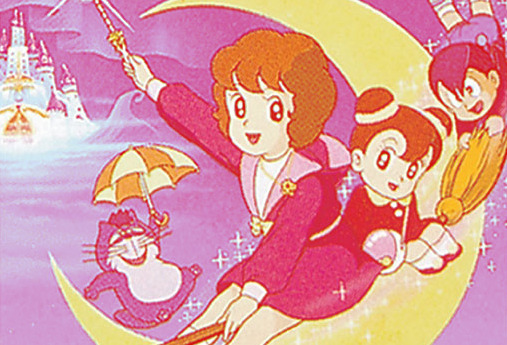
These early entries set off the precedent for Magical Girl as a genre being inherently linked to themes of coming of age; the magic of the young characters often being allegorical for childhood innocence and ultimately being abandoned or given up as a part of their growing up. It’s notable at this point in the genre, very few or no women worked in these spaces; both Sally and Akko are written by men. I wonder how the genre may have been different if it was not the case; could these young girls be allowed to grow up magical if a woman wrote their stories? I feel this is a reoccurring theme in so many future works, so stick a pin in that.
In the contemporary sense, while Magical Witches aren’t quite as frequent as they were in at the start of the genre, there are still several shows that carry on the tradition. Ojamo Doremi, while borrowing several features from later warrior/sentai styled shows like Sailor Moon, has the lead characters as girl witches again. Madoka, though stylistically more a Warrior styled show, also alludes to the history of magical girl as a genre with the naming of it’s initial antagonistic characters being “witches” while the leads are “puella magi” or literally maiden witches, though the way it explores these themes is a conversation for another essay. Lastly, Little Witch Academia is the most recent notable example of the pure Magical Girl Witch. The franchise is like a true homecoming for the genre; I could wax on about how it’s a culmination of everything the genre’s gone through in the last 60 years. From it’s allusions to flashy transformation sequences, to it’s shift in focus to friendships between girls, Little Witch Academia is an absolute treat; it’s main character being named Akko undoubtedly a homage to her ancestor of the same name.
Idol Aspirations
As the genre progressed, women were…allowed into the magazine offices. The genre was reinvigorated in the 70’s, and with these new author came a shift in focus. Stories began to take more elements from Shoujo staples, with more focus given to interpersonal relationships and aspirations of the characters coming into place.
The Magical Idol singer is this weird niche specific thing that sort of came from this period of time, though I think she signifies more than her actual appearances across the genre. Authors for the first time wanted to create stories that reflected the goals of its readers- and at the time that meant Idol culture and aspirations of being a singer or celebrity. While contemporary examples of a by-the-book idol character is a bit rare since values have changed over time, she was the first step in magical powers for Magical Girls no longer being a part of a divine destiny or something to grow out of but instead powers being the means for Girls to achieve their goals. Magical Idol singers also often incorporate the characters noticeably aging up when turning into their alter egos, serving a duel purpose of giving younger viewers a sort of aspirational character to live through while also unfortunately allowing the animators to get away with fan servicey shots of the more mature looking character.

The originator of this subgenre would be Magical Angel Creamy Mami, though Mermaid Melody would be an immediate example I’d personally think of for the Idol type character (with a big old additon of the Princess archetype too), a better example would be the aforementioned Full Moon, in which the sickly Mitsuki transforms into a Magical Idol singer to both live her dreams as a singer and to reunite with her childhood love. I’d also argue that series the Utena and Madoka follow along with this influence; in both cases the characters agree to engage with the magic of their worlds to achieve some kind of goal or dream. Still, I feel there’s lots of potential with this kind of outlook in Magical Girl stuff..!! Perhaps in the future we’ll get more magical girls focused on their careers…
Warrior Princesses
I feel throughout this essay, I’ve been noting how the Warrior and Princess archetype often overlap with the other genres, as well as each other. I believe this is because the ancestor of these two defined archetypes is one and the same, and also the series I believe that actually started magical girl as a genre; that being, Osamu Tezuka’s Princess Knight.
Princess Knight, and bare with me on this, is a story about a Princess born with both a “girl” and a “boy” heart. She forsakes her life as a princess to escape some cruel fate that’s in store for her, and masquerades as a prince by using her “boy” heart. While this is an extremely dated view on gender, it immediately gives us three defining features of magical girl as a genre: First, the Princess archetype, which often holds influence from european fairytales and magical destinies; Second, the Warrior Archetype, in which the lead character must don a more traditionally masculine role of protector against some evil power, and lead a double life; and lastly, the introduction of gender roles as a theme into the genre, and the role of femininity and masculinity in the identities of our characters.
All of these tenets are then repeated in both Sailor Moon and Utena decades later, and it’s arguably these two series that carry it forward to influence future franchises. As the major examples of these archetypes are one and the same, it is difficult to parse the two apart, even though they are quite different.
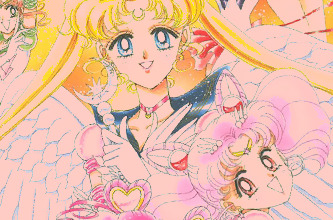
So I’ll try anyway!
I believe the Magical Warrior is defined as a main character or team of characters who are joined by a destiny to fight against some greater evil, while the Magical Princess is defined as a character who is destined to inherit or reclaim a great power linked to a monarchical structure. Both may have themes linked to western fairytales and fantasy, though often Warrior type characters have a wider breadth of influences while Princesses remain closely linked with ideas of fantasy and fairytale royalty.
While Magical Warrior is definitely the most prolific of the archetypes in modern times, arguably overlapping with nearly every storyline, I think Magical Princesses are fewer. For example, Tokyo Mew Mew is a clear cut Magical Warrior story; they girl’s aren’t born with powers (So not witches), they aren’t doing it for a personal goal (so not Idols) and none of them have some divine destiny (not princesses). However it’s a lot more difficult to find a pure Magical Princess story; in Mermaid Melody, but the story overlaps with both Warrior and Idol archetypes. Princess Tutu might be the best example, as it’s a story of retribution deeply linked with elements from european fantasy.
#magical girl#sailor moon#tokyo mew mew#full moon wo sagashite#revolutionary girl utena#pretty cure#little witch academia#mermaid melody#essay#context#princess tutu#princess knight#ojamo doremi#puella magi madoka magica
239 notes
·
View notes
Text
Another Response To WebweildingAvenger:
Lol hell yes I do.
Let me put aside how, basically until NWH, MCU Spider-Man had major writing/character problems all on his own because in citing the above stuff you are clearly making an argument from the POV of ‘this adaptation doesn’t suck because it is rooted in something from the comics’
Problem. WHICH comics? And more poignantly which comics SHOULD your adaptation be rooted in.
tl:dr: Not USM.
The fact that MCU Spider-Man idolized Tony Stark isn’t a defence of MCU Spider-Man it is just demeaning of USM Spider-Man and yet more evidence of how USM is not and frankly was never a particularly great interpretation of Spider-Man.*
Let me put this as absolutely bluntly as possible.
It is innately IMPOSSIBLE to have Peter Parker look up to ANY superhero as his father figure/mentor figure and have it NOT suck as a version of Spider-Man.
This sucked when they did it in 616 too.
Stan Lee and Steve Ditko in large part CREATED Spider-Man to NOT have any type of relationship like that.
Ever.
He was designed to be a teen hero who was his own man and independant, a subversion of the norms of teen superheroes in 1962. Shit that was literally the reason why he was called Spider-MAN in the first place. Stan wanted the character to age over time and didn’t want to deal with the awkwardness of altering his codename or of him being called Spider-Boy or something when he was in his 20s.
Peter Parker weren’t no boy. He wasn’t a boy wonder. He wasn’t the teen sidekick. He wasn’t the kid ward. He wasn’t the learning lad superhero. He was a MAN who rose and fell off the back of his own skills and hard work. He invented his OWN gadgets. He figured out his OWN fighting style. He learned what his limits were on his OWN.
Independence at every point of his career (exempting of course temporary team ups) is fundamental to his character.
The MCU didn’t not understand that.
Bendis, who after all stuck him on the New Avengers and did nothing with him for nearly 10 years, did not understand that.
Disney animation do not understand that.
And apparently far, far, far, far, far too many fans also do not understand that.
To make render Spider-Man in a relationship with Steve, Tony or whoever like the one in the MCU or in the above pages is an outright insult to the vision Stan Lee and Steve Ditko implemented for the character.
And frankly, if you are going to take Bendis’ take of Spider-Man over Lee and Ditko’s you are utterly deluded.
*I’ve been on record about this countless times.
The Spectacular Spider-Man cartoon is everything USM the comic book should have been. A modernization that retains the fundamentals of the source material making changes only as necessary.
I.e. not turning Norman into a literal green goblin monster or Venom into a borderline tentacle hentai creature retaining MJ’s 616 persona and not having Nick Fury super spy be an integral character to the ongoing narrative.
USM is arguably one of the most overrated Spider-Man series/AUs there ever was and was categorically the most overrated of the 2000s.
I respect it was not the original version of the character, but unlike say Spec, the 1994 cartoon, the 2018 video game the problem was it was never a particularly good take on the character either. It was Bendis AU were things were arbitrarily different for no discernable reason. It was never a legitimate take on the character and has only been treated as such over the years due to a combination of nostalgia and a reinforced narrative to the contrary. Elements of it are good and a sound thing to borrow from but it should NEVER be foundational in your interpretation of Spider-Man, especially in a media adaptation. Literally EVERY great Spider-Man adaptation has always prioritized the 616 stuff and more specifically the Lee/Ditko/Romita material that Bendis was (poorly) remaking.
Okay, with that, here is the thing I would Really Like to explain to you about Ultimate Spider-Man and why it's Really Not As Bad as you Try to make it out to be(And Really, between This abd your issues with Zdarsky(Without understanding anyway) you seem to show ALOT of Hatred here). But, Really, here are some things I Really Like to give you about USM:
You see, in the series, much like how Peter was in the original series, Peter was just this kid trying to get through life in the world Trying to go through an Adults World. Trying to grow to be a Better Person, Better Grown Person, and We'll Adjusted Grown Up. But, Really, much like the Order final 616 Peter, there's not much difference between the two Peter in terms of traits and personality except that the Ultimate Version is even more Angsty, Brash, Angry, Easily Irritated, Feisty, showing moments of being a Jerk, Really, both Peter seem Pretty Similar. Just that the Ultimate Version is more Angsty and Angry than the Original 616 Version. Yeah, there is a few difference with how Peter made his web shooters abd just a Few Tiny Others. But, Really, in terms of Personality, Traits, and IQ, this Peter just seems Plenty Similar to the original 616 Version.
But, the other thing about the Ultimate Version was that it was basically a modern retelling of Bendis trying to Explore the world in Peter's life. Making it more Relatable and Human. And Really, Bendis just makes it as hard as it goes with how realistic the world is in terms of reaction, situations, abd what not. Not only that, but the situations with Peter are also Alot More Relatistic with how Bendis tried to portray it with the many situations Peter had to go through to keep his identity a secret, with how he would try to make his money, with how he's trying to keep his life a secret from his Aunt and loved ones, stuff like that. And Really, the life with Peter,cwhen you try to see through it with the many times he was injured abd tried to get better but had to keep his identity a secret from Everyone, when he's in a situation far away from his Aunt May when it involves stuff like Villains, Psychos, and Mutants, and Stuff that's more Problematic to Peter than the last and than the next. Really, just builds in more tensions, stakes, and just makes Peter's situation more Terrifying and Harder. Like, Really.....
Also, with stuff like Aunt May as she develops, she Actually Is portrayed as Alot More Human than it seems. Not saying she's Actually Better than the Original 516 Version, but, This Aunt May is Also Relatable to her life. And just makes her more Human, Sympathetic, and Relatable. Like, her worrying about Peter without knowing What is Actually going on with him. Her nearly falling into paranoia and depression. Her constantly worrying about Peter seeing as how the world full of heroes are Actually Growing when she saw Spidey fighting Criminals Right Infront Of Her. Her going to therapy over her troubles abd guilt over her nephew, Ben, Friends, and Family, stuff like that. Abd Really, as the series have gone on, May Develops more abd more throughout her arc. Really, there's Alot more humanity abd May than you think.
And Yeah, while MJ is Pretty Much Different to her 616 Counterpart, she was still pretty much good. Pretty Much had Great Chemistry with Peter. Had a Great Life with Peter. All that stuff. And she seems like she was developing more abd More to her 616 Self. She was a Great Friend who turned out to be a Great Lover for Peter.
While the villains were different, some were Also as Great as they could be with ones like Norman Osborn, Otto Octavious, Kingpin, Electro, Shocker, Vulture, Hammerhead, and a few others.
Scorpion was Also Pretty Good for it being a Clone of Peter abd what not. Though, had Potential to be Great.
While some villains didn't get much character abd some just been reduced to Cameos, they Honestly weren't as Badly Portrayed as you think.
Compared to some of not Most of the other characters outside of Spidey abd Fantastic Four, the ones they have are Pretty Much just Terrible. Even the Heroes Themselves.
As for Nick Fury, with how things are going between the situation at Oscorp, the chaos roaming around in Peter's School, the Massive Amounts of Chaos and Foes Peter had been involved in, As Well as Peter being this Young Beginner as a Hero getting involved in more Chaotic, Crazy, and Important Stuff, it would make More Sense for Fury to have himself be involved from time to time with him being an Authority Figure. Abd Really, Peter Never gotten along with him much anyway. Especially Since Peter learned things on his own.
And Really, there were some Great Stuff that Ultimates did have with ones like not only Miles Morales(Who should Stay at 616 for Plenty Important Reasons), but, also Jessica Drew who is a Clone of Peter Parker who is an allegory of being a Transgender and Agender Person and is More Closer to Peter as Sibling compared to how the 616 Version SHOULD'VE GOTTEN. And has been able to develop and find her own Identity from time to time.
The Maker who is a Version of Reed Richards whos had an unfair life with his father treating him like Crap not appreciating his works, his life with Sue is not as good as it could have been, him being screwed over by the Government despite his Many Successful Efforts, stuff that had actually made Reed feel screwed Over and just wants to bring his life as stable and great as it could be as he admired his other counterparts lives.
Stuff like That Really.
Really, while the 616 Version is better in many ways and yes, most people Should Try to adapt to the 616 version, there Is No Denying that the Ultimate Version had brought many people into comics. Myself included. Abd had made people feel more relatable to their situations and life. As well as recognizing the amount of effort, relatability, and realism as well as stakes and tension that it brought to them. And some cool and great and compelling ideas with some stuff. Like with Ultimate Jessica Drew, some creations of some Spiders, technology, etc. Stuff you could find interesting.
Really, I could also give you more in-depth of how the Ultimate Version is Really Not As Bad as you Try to make it out to be. But, we'll be here a while. And Really, calling it The most overrated in the 2000s is a bit of a stretch. Especially coming from someone like you. Really.....
10 notes
·
View notes
Link
I did a four part series of trivia posts when ATOM Volume 1: Tyrantis Walks Among Us! came out, and that was pretty fun! You can see that set of trivia posts here if you’d like. I thought it’d be fun to do another now that ATOM Volume 2: Tyrantis Roams the Earth! is out - just one this time, because a lot of the trivia I talked about with Volume 1 still applies.
I’m gonna divide this into two sections: non-spoiler trivia, for things that really don’t give a lot of plot points away, and spoiler trivia, for things that DO give away major plot points. I recommend not reading the spoiler trivia until after you’ve read Tyrantis Roams the Earth!, for obvious reasons, and will put the spoiler trivia under a cut.
Ok, let’s go!
- So if you read ATOM Volume 1, you probably noticed that the book is split not only into chapters, but “episodes,” which consist of four chapters a piece. It’s kind of a nod to how the series owes a great deal of its DNA to various monster of the week shows, with Godzilla: the Series and The Godzilla Power Hour being obvious influences. It also allowed me to pepper in some illustrations and cheesy b-movie style titles into each volume.
- The first “episode” of Volume 2, Tyrantis in Tokyo, pays explicit homage to the giant monster movies of Japan, perhaps even moreso than the chapters that came before it. Given how much Japanese media influenced ATOM - from tokusatsu like the Godzilla, Gamera, and Ultraman franchises to anime like Digimon and Evangelion (hell, the title of this episode itself is a tip of the hat to Tenchi Muyo by way of one of its spinoffs) - it kind of felt obligatory that Tyrantis visit Japan and pay his respects.
- Tyrantis in Tokyo also fits in a tribute to another staple of Atomic Age pop culture: Rock and Roll.
- Kutulusca, the giant cephalopod that appears in Tyrantis in Tokyo, is one of the oldest kaiju in this series, dating back to the first iteration of Tyrantis’s story that I put to paper back in 2001 or so. It’s changed a lot since then, but its fight with Tyrantis goes more or less the way it originally did.
- Old Meg, the giant placoderm/shark, and Nastadyne, the bipedal beetle, both owe their existence directly to Deviantart’s Godzilla fandom. Old Meg originated as a dunkleosteus monster I submitted to a “create a Godzilla kaiju” contest held by Matt Frank, while Nastadyne is based on a Megalon redesign I made during the “redesign all the Godzilla kaiju” phase of DA’s kaiju fandom.
- The second episode, Tyrantis vs. the Red Menace, gets dark as we visit the USSR, which had enough REAL horror with atomic power in its history to make creature features seem a bit defanged by comparison. It’s probably the episode with the strongest horror elements - ATOM’s always been influenced by Resident Evil, and this is probably where that influence shows the most strongly.
- It also features the first fully robotic mecha in the series, the mighty Herakoschei! Its name is a combination of “Heracles” and “Koschei the Deathless,” with the former part being added by its Russian creators to make it seem a bit more international as they offer it to the U.N. in hopes of gaining aid for a very extreme kaiju problem they’ve developed.
- Most of Tyrantis vs. the Red Menace takes place in the Siberian Monster Zone. Its name is a reference to the Lawless Monster Zone in Ultraman, which is such a cool fucking name I wish that I wish I could go back in time and steal it.
- The next episode, Tyrantis’s Revenge, is... full of spoilers, so we’ll move on for now.
- The penultimate episode, Tyrantis vs. the Martian Monsters, is a love letter to MANY different sci-fi stories that involve life on Mars, though the most prominent of them is of course The War of The Worlds (one of my top 3 favorite books) and its various adaptations. From its tentacles sapient martians, the tripodal leader of the titular monsters whose name includes the word “ulla” which is uttered by said sapient martians, the plant monster made of red vines, the cylinder-shaped spacecraft the Martian monsters are sent to earth on, the copper-skinned stingray-esque flying martian who shoots lasers from its tail, and the fact that every chapter title in this episode is a quote from the book, the H.G. Wells influence is STRONG.
- The final episode, Invasion from Beyond!, is shamelessly inspired by Destroy All Monsters, although there’s a dash of “To Serve Men,” Godzilla vs. Monster Zero, and The Day the Earth Stood Still mixed in as well. It’s also sort of a tribute to my first “published” bit of a kaiju fiction - a rewrite of Destroy All Monsters that included EVERY Godzilla monster that had appeared at the time, which my middle school self wrote back in 2002 or so for Kaiju Headquarters, a kaiju fansite I’m not sure exists anymore. Invasion from Beyond! is just as ambitious (but hopefully better executed) as my DAM Remake, with dozens upon dozens of different kaiju duking it out, earthlings vs. aliens.
- There were three different documents I made to outline the final battle of Invasion from Beyond! It’s the largest episode of the series so far and more than half of it is that fucking fight. My inner child is pleased, though, so hopefully you will be too.
Ok, that’s all I can share without spoilers. READER BEWARE WHAT FOLLOWS BELOW THE CUT!
JUST MAKING SURE you know that SPOILERS will follow from here on out. Read at your own peril! YOU WERE WARNED!
(I’m gonna start with lighter ones just in case you scrolled too far and want to turn back)
- There’s a number of explicit Spielberg homages in ATOM Volume 2, from a “we need a bigger boat” joke during a chase with a giant shark to the fact that Invasion from Beyond! opens with a group of people flying to an island of monsters to review whether or not it should get more funding.
- When Tyrantis appears in the first chapter, I snuck in modified lyrics of The Godzilla Power Hour’s theme song. “Up from the depths”... “several stories high”... “breathing fire”... “its head in the sky”... Tyrantis! Tyrantis! Tyrantis!
- The two rock bands in Tyrantis in Tokyo have real life inspirations ala Gwen Valentine, albeit a bit more muddled than hers. The Cashews are inspired by The Peanuts (see what I did there), while The Thunder Lizards are a mix of The Rolling Stones, the Beatles, Buddy Holly, and the Big Bopper. I wanted The Thunder Lizards to be more akin to the myth of a famous rock and roll band than the reality - less the real Beatles and more the Yellow Submarine cartoon version of them.
- The song The Thunder Lizards write for Tyrantis was written to fit the tune of “The Godzilla March” from Godzilla vs. Gigan, though ideally if someone made an actual song of it it would be its own song. I got the idea from Over the Garden Wall, which used the Christmas song “O Holy Night” as a a starting point for “Come Wayward Souls.”
- Perry Martin, UNNO reporter and peer of Henry Robertson, is a nod to Raymond Burr, with his name being a combination of two of Burr’s most famous roles: Perry Mason, and Steve Martin from Godzilla King of the Monsters (1956).
- Dr. Rinko Tsuburaya is a few homages in one. Her name comes from Rinko Kikuchi (who played Mako Mori in Pacific Rim), while her last name is obviously in homage of Eiji Tsuburaya. Her being the daughter of an esteemed scientist is inspired by Emiko Yamane from the original Gojira.
- Nastadyne’s Burning Justice mode is named after a similar super mode from various Transformers cartoons, though it’s more directly inspired by the Shining/Burning Finger super move from G Gundam.
- Martians sending kaiju to different planets via shooting them out of cannons (with or without cylinder spaceships around them) is another War of the Worlds shoutout. So is martians living on Venus after their homeworld was made uninhabitable, actually.
- Kurokame’s vocalizations are described as wails in explicit homage to Gamera. His name can be translated as either “black tortoise” (a reference to the mythical guardian beast Genbu, which can also be construed as a Gamera reference thanks to Gamera: Advent of Irys implying Gamera and Genbu are one and the same) or a portmanteau of the Japanese words for crocodile and turtle - “crocturtle.”
- Burodon’s name is just a mangling of “burrow down.” It also sounds vaguely like Baragon, who Burodon is loosely inspired by. AND, since Burodon is sort of a knockoff/modified Baragon, that kinda makes him a reference to various monsters in Ultraman!
- The final battle of Tyrantis in Tokyo is sort of a hybrid of the finales of Ghidorah the 3 Headed Monster and Destroy All Monsters.
- The Japanese kaiju teaching Tyrantis the art of throwing rocks at your enemies is both a joke on the prominence of rock throwing in Japanese kaiju fights AND the tired trope of an American hero learning secret martial arts from a Japanese mentor ala Batman, Iron Fist, etc. In this case, the secret martial art is throwing rocks at people.
- When introduced to Herakoschei and its pilot, we are told that the strain of piloting this early mecha is so intense that many pilots have died in the process, with the current one passing out on more than few occasions. This is of course a Pacific Rim homage - sadly, no one invents drifting.
- Herakoschei’s design is a loose homage to Robby the Robot and Cherno Alpha, because big boxy robots are cool.
- The Writhing Flesh and ESPECIALLY Pathogen are both hugely influenced by Resident Evil and The Thing. Giant body horror piles of raw flesh, tendrils, mismatched mouths and limbs may be a bit outside the main era of monster design ATOM homages, but they fit the themes and bring a nice contrast.
- I came up with Pathogen long before Corona but MAN it definitely feels different in 2021 to have a giant monster whose name is a synonym for disease driving other creatures crazy in a quarantine zone than it did when I plotted out the story in 2016.
- The chapter title “Hello, Old Foes” is a riff on “Goodbye, Old Friend”
- Minerva, the kaiju-fied clone of Dr. Lerna, is meant to be an homage to Attack of the 50 Foot Woman, which is a genuinely good giant monster flick. I am sure many of you will also believe I included her because I’m a pervert whose into tall women, but you’d be wrong! I included the seven foot tall Russian mecha pilot Ludmilla Portnova because I’m a pervert whose into tall women. Minerva’s inclusion was just coincidental, I swear!
- Since Promythigor is a play on the archetypal ape kaiju to contrast Tyrantis as a play on the archetypal fire-breathing reptile kaiju, their fight has a lot of nods to King Kong movies. Promythigor attempts the famous jaw-snap maneuver of Kong (with less success), J.C. Clark paraphrases the “brute force vs. a thinking animal” line from the King Kong vs. Godzilla American cut, and Tyrantis slides down a mountain to knock Promythigor off his feet in a reversal of Kong doing the same in King Kong vs. Godzilla.
- Tyrantis sliding down a mountain on his tail doubles as a Godzilla vs. Megalon homage.
- Though Promythigor is the archetypal Ape and Tyrantis the archetypal Fire-Breathing Reptile, I think it’s fun to note that in some ways, Promythigor is the Godzilla equivalent in their matchup, and Tyrantis the Kong. Promythigor has a slight size advantage, was scarred by humans performing unethical weapons technology, and is associated with violent explosions. Tyrantis is a good-at-heart prehistoric beast who humanized in part by his unlikely friendship with a human woman.
- Of course, in the context of the famous quote from the American cut of King Kong vs. Godzilla, they remain in their archetypal lanes. Promythigor is the more intelligent of the two (though not necessarily wiser), and Tyrantis is in many ways a brute reptile. Their battle is a rebuttal of sorts to the assertion that Kong is the “better” animal because he is closer to human. Promythigor’s near human creativity and emotions don’t make him the kinder/more benevolent monster, but instead fuel a very self-centered and destructive attitude that makes him the far more dangerous threat. On the other hand, Tyrantis, who is less intelligent, limited in communication with others by his reptilian mindset and instincts, and simple in his thoughts and desires, is nonetheless a sweet creature that is easily dealt with when others consider his animal needs and mindset. There’s a quote from Hellboy I love that probably sums up all of my writing thus far: “To be other than human does not mean the same as being less,” and that’s what the matchup between these two in particular tries to illustrate: the “less” human Tyrantis is nonetheless more benign than the “more” human Promythigor.
- Kraydi the psychic lizard began life as a soft sculpture I made of the Canyon Krayt Dragon from The Wildlife of Star Wars. The sculpture didn’t look much like the illustration, but I liked how it came out, and so I made it an original monster named Kraydi (see what I did there). Figuring out an explanation for that name in ATOM’s world was possibly the most difficult kaiju naming task in the series, but it worked out in the end.
- Kraydi and Promythigor having psychic powers is a result of my time on Godzilla fan forums in my middle school years. Most of the forums had OC kaiju battle tournaments, and SO many of those kaiju had a wide array of beam weapons and psychic powers just to win the tournaments by beam-spamming and mind controlling their foes into oblivion. There’s a special kind of rage you get when your original creation is beaten by “Fire Godzilla” because he has a genius level intellect and the power of unstoppable telekinesis. Kraydi began as (and still is I suppose) my attempt to do a psychic kaiju well, while Promythigor’s villainy being tied to psychic powers being forced on him is sort of my passive aggressive commentary on people foisting powers on a monster without any real thematic reason for them.
- Henry Robertson and Dr. Praetorius chewing out the laziness of people giving kaiju completely unaltered names of mythic beasts will probably be seen as a jab at the Monsterverse and/or the numerous writers in the kaiju OC scene who do the same, but it’s ACTUALLY a jab at my past self, who had DOZENS of kaiju whose names were just Greek mythological figures verbatim. There are dozens of kaiju named Hydra, Scylla, Charybdis, Chimera, etc., past me, try to make the names stand out! Oh wait you did. I mean, don’t pat yourself on the back too much, you still went with “Mothmanud” as a canon name and never came up with something better, but, like, good on ya for trying I guess.
- Dr. Praetorius takes his name from the evil mad scientis in Bride of Frankenstein, who basically has all the wicked traits that Universal’s Frankenstein downplayed in their take on Dr. Frankenstein. Ironically, ATOM’s Dr. Praetorius is a bit less evil than his fellow mad scientists in ATOM. I really like how his character turned out, he surprised me.
- Isaac Rossum, the pilot of the USA mecha Atomoton, is named for Isaac Aasimov, whose robot stories are to robot fiction what Lord of the Rings is to high fantasy. His last name is a reference to Rossum’s Universal Robots, which is where the word “robot” came from.
- The unfortunate pilots of MechaTyrantis in ATOM Volumes 1 and 2 are all nods to Jurassic Park. John Ludlow = John Hammond and Peter Ludlow, Ian Grant = Ian Malcolm and Alan Grant, Dennis Dodgson = Dennis Nedry and Lewis Dodgson.
- A good way to pitch Invasion from Beyond! would be “what if the staff and monsters were able to fight back when the Kilaaks tried to take over Monsterland?”
- Ok, here’s a fun joke that no one will get but me because it requires a very specific chain of logic based on some obscure and loosely connected nerd bullshit. There’s a rocker in ATOM’s universe named Sebastian Haff, right? One of his songs, “Darling Let’s Shimmy,” is referenced right before a mothmanud larva emerges from the ground in both ATOM Vol. 1 and 2. Ok, so, in the Bubba Hotep, an aging Elvis impersonator named Sebastian Haff claims he is actually the real Elvis Presley, having changed places with the real Sebastian Haff as a sort of Prince and the Pauper deal that went wrong. Got that? Ok, so, in UFO folklore, a common joke is the theory that Elvis didn’t die, but was rather abducted by aliens (or he actually WAS an alien the whole time - the whole “Elvis didn’t die, he just went home” joke in Men in Black is a good example of this). Ok? Ok. So, in ATOM’s universe, we can surmise that their equivalent of Elvis, whose name is Sebastian Haff, WAS abducted by aliens, and that his song “Darling Let’s Shimmy” is subconsciously influenced by his repressed memories from his time aboard the Beyonder spaceships, which is why it accidentally awoke a Mothmanud larva in Volume 1. There’s a lot of bullshit jokes I put into ATOM, but this is perhaps the bullshittiest of them all.
- One of the most common bits of feedback on ATOM Volume 1 I got was “I kept waiting for something to eat Brick Rockwell, he’s such an asshole.” And I had to smile and go, “Oh, yeah, guess he never got his, huh?” the whole time without letting on that he was going to die here all along!
- Dr. Lerna and Brick Rockwell’s nature as foils to each other is probably most apparent in Invasion from Beyond!, where both are given fairly similar situations - a nonhuman approaches them with a solution to a global crisis - and react to it very differently. I worry that some people may think they both made the same choice and got different results, and that that’s hypocrisy on my part, but I hope I wrote it so you can see how their choices and situations actually differ in key ways, and why their decisions, while similar on the surface, are ultimately very different, and thus result in almost opposite outcomes.
- So, when I planned out this book in 2016, I swear I didn’t know about the Orca from 2019′s Godzilla King of the Monsters. Having the plot hang around Dr. Lerna deciding whether or not to use a sonic device to rouse all the kaiju to save the earth was not INTENDED to be a Monsterverse reference - it came about from me looking at Pathfinder’s take on kaiju, who are all explicitly influenceable by music, and thinking, “Oh, wow, music and songs DO have a major connection with kaiju in a lot of media, I should do something with that.” Whem KOTM came out a few days after Volume 1 came out I realized I was kinda fucked here, because the comparison was definitely going to be made, but I’d also set this all up already and you can’t just change suddenly to avoid looking like a copy cat and make a good story, so... I dunno, I leaned into it a bit, but it is what it is.
- While most people will probably think they’re a reference to the Reptoids of UFO folklore, the Reptodites are more inspired by the Dinosapien of speculative evolution fame and, even morso, by the Reptites from Chrono Trigger. Me wanting to avoid the “lizard people control the government” conspiracy theory trope is one of the main reasons why Reptodites have this non-interference clause with humanity.
- Lieutenant Gray is a bunch of different humanoid aliens rolled into one - a little Hopskinville goblin, a little classic gray, a little this one weird alien with five-fingered zygodactyl hands, etc.
- There’s some Beyonder Mecha in this volume that are basically kaiju-fied versions of the Flatwoods Monster. The species that built them ALSO engineered the Mothmanuds, because connecting Mothman and the Flatwoods Monster is fun!
- Pleprah is, obviously, a one-eyed one-horned flying purple people eater.
- Tyrantis’s brush with death, in addition to being so very anime, was inspired by my dad outlining how mythic heroes often have to travel to the underworld/land of the dead before they can finish their journey. It’s one of the plot points that I’ve had planned for this series since middle school.
- I’m sure some will view it as hackneyed and corny, but as a person who’s battled with depression for decades, having Tyrantis’s choice to live be the big heroic turn of the finale was very important to me. Tyrantis incorporates elements of a lot of imaginary friends I made as a kid, and in many ways he’s kind of the face of my more positive side in my head. He’s been telling me to choose to live for a while, and while maybe to an outsider it may seem hackneyed, it’s just... very Tyrantis. He chooses life and kindness in the face of pain and struggle. That’s Tyrantis.
- Tyrantis’s powered up form is called “Hyper Mode,” which is another Gundam reference. Originally it was a lot gaudier and involved him turning gold like a fuckin’ Super Saiyan. I opted for something a little more toned down here.
- Also, speaking of KOTM references, I decided to make Hyper Mode Tyrantis’s final duel with Pathogen be a sort of foil to Burning Godzilla’s final bout with Ghidorah in KOTM. Instead of ravaging the city, Hyper Tyrantis’s pulse of energy rejuvenates his fallen allies, and as a result he is “crowned” not out of fear for his supremacy in the wake of killing a powerful enemy, but in gratitude for his kindness. See? Leaning into it!
- And now I can finally reveal that Yamaneon is ATOM’s equivalent of The Monolith Monsters - that is, a kaiju that is also a mineral. I took the “strange continuously growing rock” thing in a very different direction, though, as unlike The Monolith Monsters, Yamaneon is actually alive.
- At various points in the pre-writing process, either Promythigor, MechaTyrantis, or both were going to die fighting Pathogen. I ultimately decided to let them both live, with MechaTyrantis even getting his flesh and blood body back, because I think it’s more interesting and thematically consistent that way. They get a chance to heal their wounds by changing their ways.
- The Great Beyonder and Dorazor both almost didn’t make the cut, as I felt they didn’t have the same pull as villains that Pathogen, Promythigor, and MechaTyrantis did. But then I thought that could actually be the gag - build them up as the final boss, only to have Pathogen take their crown. I want to explore post-face turn Dorazor a bit more, though. We’ll have to see about that in a later volume.
- Volumes 1 and 2 make up what I call “The Ballad of Tyrantis Arc” for ATOM. I call it that because Tyrantis’s storyline in these two volumes was patterend after Chivalric ballads like Yvain the Knight of the Lion. Tyrantis, a heroic warrior who is kind but dumb of ass, learns of strange goings on outside his home and investigates. During his journey into the unknown he falls in love with a powerful woman, whose favor he tries to win. Through happenstance he is separated from his love and, distraught, wanders around fighting various foes to prove his worth, before finally returning to his love a better hero. Invasion from Beyond! could even be seen as a sort of Morte d’Artur, with Tyrantis and a bunch of other kaiju heroes (including Nastadyne and Kemlasulla, who are built up as Hero Kaiju of Another Story) take part in a huge battle that threatens their idealic kingdom (of monsters).
- Volume 2 isn’t the end of ATOM, but it’s designed to work as an ending if you want to tap out here. As a reader I feel a definitive ending is important, but as a writer I’m always tempted to revisit my beloved characters, so I feel giving closure while leaving a few doors open for possible future adventures is a good compromise between these positions. There will be more ATOM stories, some (but not all!) following Tyrantis and Dr. Lerna, but if you want to know that Tyrantis and Dr. Lerna get an ending and the resolution to their arcs such a thing promises, here you go. An ending, if not THE END.
23 notes
·
View notes
Text
Why Superheroes still matter in Arabia
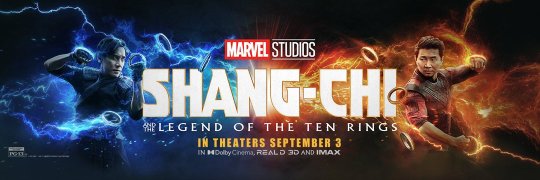
The pop-culture segment in general and superhero segment in particular is the least considered in Saudi Business community (local and international players included). Toy companies, Entertainment houses, Media production companies and even FMCG companies still consider kids (esp. tweens) as primary audience of these properties that have inspired, excited and entertained old and young for more than eight decades
While the society has shown tremendous interest in activities organized by General Entertainment Authority since 2017, the consensus within the business community is antithetical to the wishes of this niche segment of 5 million plus. Shocking as it may seem, the level of interest, fan following isn't restricted to cosmopolitan centers (Riyadh, Jeddah and Dammam/Khobar); in fact, regions such as Hail, Qassim and Al Jouf are among the top 5 out of top 10 regions with most search queries in the country concerning these subject(s)
The Quest for Superhero Content: Saudi Arabia vs The World
Saudi Arabia:

Worldwide:
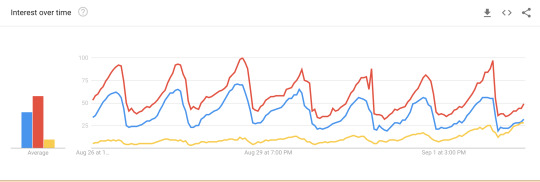
Search Queries: Marvel Cinematic Universe (Blue), Marvel Comics (Red), Shang Chi and the Legend of The Ten Rings (Yellow)
While for me this information isn't new as I've been mining data on Google and Facebook since 2013, I chose today to talk about it in the form of an article. I did so because at this moment in time, the biggest happening in the world of heroes is not being led by DC Comics flagship characters like Superman, Batman, Wonder Woman or Justice League; nor it's being led by Marvel's flagship characters like Spider-Man, The Avengers or X-Men; nor by Star Wars, Transformers or Game of Thrones for that matter. Instead, it's being led by a highly underrated superhero of Marvel who was created in the 70s thanks to the Kung Fu craze (mainly because of Bruce Lee) during that time. His name: Shang Chi, the first Asian/East Asian Superhero
Both graphs show us that audiences in Saudi Arabia show a higher level of interest than the rest of the world combined. Both MCU and Marvel Comics related queries/searches are half as much popular or more (vs Worldwide audience), the underrated superhero Shang Chi is reaching the same mark. Of course, one can't ignore the superior marketing tactics deployed by Marvel Entertainment and Disney plus the character's movie has been released yesterday. The million dollar questions here are:
Why would audiences in the Kingdom show incremental interest in a character whose animated series never existed nor broadcasted on Saudi Channel 1 or 2 in the 70s, 80s or even 90s? (Reminder: Bruce Lee VHS were available for rent and David Carridine's Kung Fu series was on air throughout the 80s on Saudi Channel 2)
Why would audiences here be interested in a character whose Arabized comics never were part of Amlaq Digests or reprinted editions of Marvel that were available in neighborhood mini-markets or imported comic books at Star Markets, Sarawat Supermarkets or Tihama Bookstores (distributed by Al Khazindar)?
Before attempting to answer my own questions, we need to understand that Shang Chi is one of those characters who may not have long-running series in the comic book world that span decades but because of their appeal and strong following, have been part of some of the best stories ever written but with the age of diversity, inclusion and online media, he is important for winning over new audiences of East Asian origin around the world, not just China!
If this is the impact of an underrated character, imagine what happens when Spider-Man: No Way Home is released in December

Superhero Content & the Arab
Before Content Strategy & Marketing were a thing, comic book publishers were doing it even before World War 2. Over the decades, what was being published was resonating with audiences not just in White America but across the world. In the Middle East, the 70s was the starting point for countries such as Iraq, Syria, Lebanon and Egypt but the trend made inroads into the Gulf region, especially in Saudi Arabia in the late 70s
The values shared in American superhero comics resonated with Arabs because of their own history of rich story telling as well as adaptations. Just like the Arab folklore, real historical figures of the region were presented as heroes; in fact superheroes in some cases. Another reason for this is that most of the characters produced in the Golden as well as Silver Ages of comics were created mainly by individuals who came from Abrahamic households. Their story telling borrowed heavily from the Biblical accounts of Prophets and other noblemen (who are also mentioned in Quran) regarding Good vs Evil, Light vs Darkness, the virtue of Doing the Right Thing. It was inevitable that such Western creations would resonate with Arabs
The seeds were planted and once an idea or interest takes root in the hearts and minds, it's hard to let it go
And now, the Superhero Content is being published in over-drive mode. Just check Youtube, Facebook, Instagram for starters and you'll see that the Arab content is there; driven primarily by creators in Saudi Arabia, UAE, Kuwait and Bahrain; ranging from comics to collectibles and even cosplays. This...is the Aladdin Effect
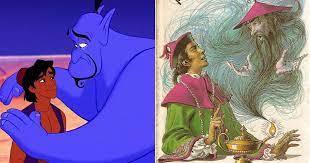
Aladdin was actually Chinese. Thanks to Abbasid Ruler Haroon Al Rasheed, he became an innate part of Arab Literature
Businesses in Saudi Arabia are losing out
Like the community of Anime fans, the superhero community has been there for decades. It came out with full force during Comic Cons that happened in Jeddah and Riyadh between 2017-2019. The first Saudi Comic Con saw a whopping attendance of 20,000 geeks during 3 days of festivity. It wasn't surprising to see a father attending Stan Lee Super Con Riyadh (2019) with his daughter and son waiting anxiously to meet Lou Ferrigno (the star of 1970s Incredible Hulk series). A Saudi Gen-X Father with his millennial daughter and his Gen-Z son (all fans of the Hulk) or Expatriates travelling to Riyadh to attend the festivity and participate in artist alleys and cosplay comeptitions. No wonder this community was referred to as 'Buried Talent' by Arab News
As they say: Data is the new Oil. Unfortunately, international brands and local businesses in Saudi Arabia haven't taken this segment seriously. The collection that's available at an international 'Megastore' in Saudi Arabia pales in comparison to its sister outlets in Dubai. Toy stores, international or locally owned, are still adamant to sell toys to kids instead of focusing on key collectible properties which are being ordered from US market by Geeks in Saudi Arabia thanks to Amazon. Gaming console companies organize impressive launches of their Superhero game in neighboring Gulf countries but nothing as such takes place here. Dairy brands are still using Superheroes for their "Got Milk" approach. What's needed is to take a look at Data that's available on Google and Facebook's Business Suites, for the very least
While young entrepreneurs with limited resources have opened up shops (online and offline) in major Saudi cities (Examples include: Jeddah's Konami licensed Gaming Lounge, a proper Comic Book Cafe in Dammam) and Riyadh having hosted the world's major Toy Fair as well as Stan Lee Super Con and Saudi Anime Expo BUT more needs to be done. The data is there. Action is needed from the Private Sector
The starting point would be with seed investors and venture capitalists who are currently obsessed with re-inventing the wheel by investing in ride hailing apps, food delivery apps, online baqalas, fintechs while a niche segment's wants mostly remain unaddressed
6 notes
·
View notes
Photo
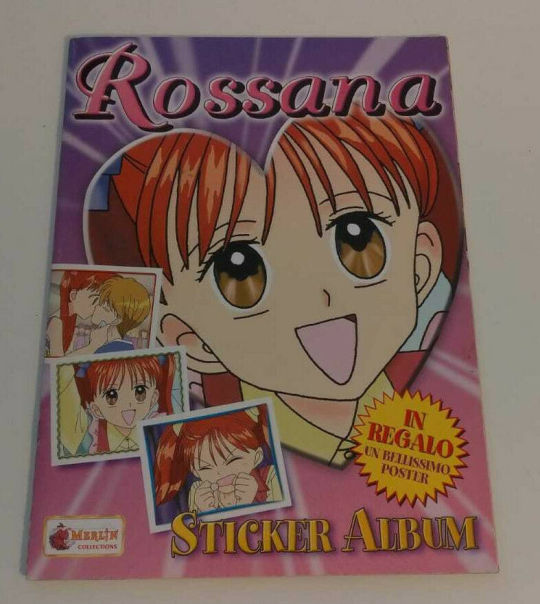


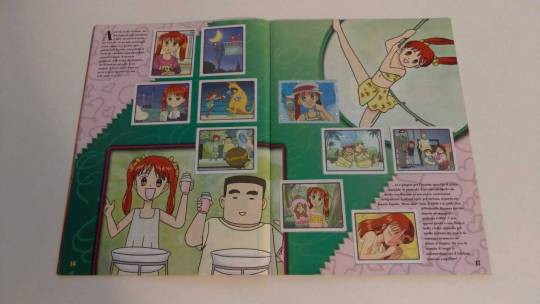

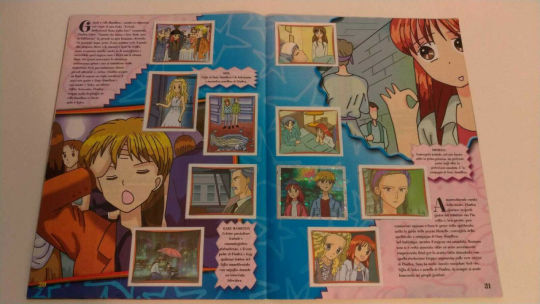
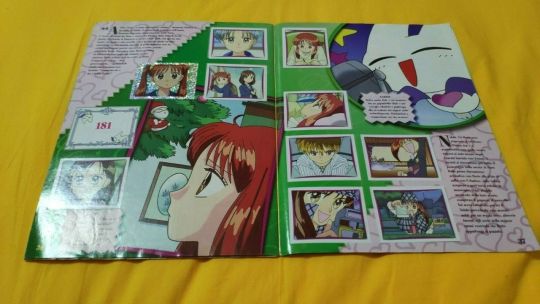
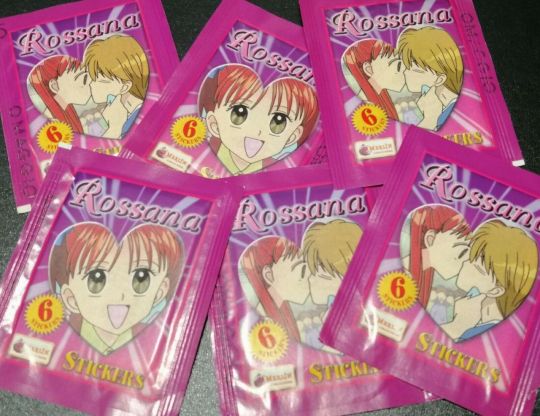
Kodomo No Omocha’s Sticker Album Highlights (Merlin, 2001, Italian)
Let's keep talking about retro japanese cartoons, shall we? I've done some posts lately in which I reviewed Game Boy games based on comics or animations from Japan, with the intention of covering series that I either used to watch as a kid or recall being popular during the GB and GBC eras. A lot of these games have never been released outside Japan, so it's also an occasion to gather up some imports and see what Italy has missed on.
There's actually a particular cartoon I wanted to talk about since the start of this research, but unfortunately it seems it has never recieved any videogame adaptation. But hey, this is my blog, and I can talk about whatever I want! >:C Also I suddenly remembered my Fandom tag has been created purposely for non-gaming objects. >.> So, let's look at some stickers while I tell you the tale of Rossana.
Rossana can be best described as the soap opera that spawned a second wave of nipponic hysteria among every single italian person under 20 during the very last period of the 90s. It's like The Bold And The Beautiful looked at Pokèmon and said "yeah, I want something like that.". Its popularity hit even harder my personal view of the world as the plot starts with the protagonists attending the last year of elementary school... which is exactly what me and my friends were doing, multiplying the relatable factor tenfold.
This cartoon took everyone by their necks since its first episode: it was broadcasted on what was, at the time, the best and most popular italian channel for children entertainment, and heavily advertised before starting, so we knew exactly when to tune in to catch it.
The day after the first episode, school looked like a different place. Everyone in class was chanting the opening at the top of their lungs; boys were acting like the male protagonists, all girls mimicked the main role Rossana, the more artisticly inclined ones started doodling the characters anywhere possible, including textbooks and homework. Teachers were in tears.
I had watched the first episode and found it amusing enough to keep me entertained, so for some period I fully partecipated in the general enjoyment of the cartoon. Then, I started missing episodes (when you missed something on TV during the 90s... it was gone!) and upon returning to it, I found the plot had become much more complex and centered on sentimental intrigues, of which I never gave a toss about, so I jumped off the hype train while others still followed it until the end.
As it is usual for these productions, Rossana was another anime based on a manga series; the original work is titled "Kodomo No Omocha" (which literally means "Children's Plaything"... yeah, I too find it a tad creepy), drawn by mangaka Miho Obana and serialized by Ribon from 1994 to 1998.
It tells the story of Rossana Kurata, a child actress (an idol in the original story) trying to balance her career with a normal kid's life by going to school and having normal friends: however, her class is anything but normal and she finds herself often fighting against the biggest bully of the school group, Hayama (translated as Heric in italian). As the story progresses, though, Sana understands Heric's complex and at times completely inappropriate attitude is a result of a troubled childhood, having lost his mother at birth and being bullied by his older sister and completely ignored by his father. Willing to help him out, Sana befriends him and starts to develop even deeper feelings, also sharing her own troubled past: she had been actually abandoned as a newborn and adopted by Misako, a famous writer.
New characters are introduced along the way, among which the child actor Charles, Sana's schoolmate but also colleague which the girl will work alongside during a trip to the States, and Funny, an extremely extroverted kid that will at first become close friends with Sana, but that will, at some point, steal Heric's heart, leaving Sana to deal with heartbreak and jealousy.
Despite the story being drawn in an energetic shojo style and the episodes showing many hysterical/demential jokes along the way, Kodomo No Omocha is a dramatic story centered on overcoming past secrets, venomous feelings, and describing the difficult shift from childhood to adolescence.
The original 10 manga volumes got adapted for animation in 102 episodes, which broadcasted on TV Tokyo from 1996 to 1998. In Italy, the anime got imported first with the direct title "Rossana": it was aired in its entirety during all of the year 2000, and yes, all the 102 episodes got translated! Unfortunately, the channel wanted to make Rossana completely targetable to little kids, which meant that many plot elements had to undergo heavy censorship. The result was a comedy/demential series that at times showed a sentimental route, and for the rest felt very cut, like it was hiding something.
This was no Chou Gals!-styled localizaion effort: scenes were edited or completely deleted, names and terms translated losing all context, graphics and objects concerning japanese culture got zoomed out, some episodes even aired randomly without following the original order, and finally the ending got cut, leaving it as an open cliffhanger.
Kodomo No Omocha is, originally, marketed towards an adolescent audience, but kids are a much more profitable target, so a lot of the original plot points went away: Sana no longer thinks of Rei (her adult manager, called Robby in italian) as his boyfriend; it's never mentioned that her actual mother abandoned her in a park after giving birth at only 14 years old; and many instances in which some kids (Heric, but also Komori in later eps) practice self-harm or have suicidal thoughts are cut in their entirety.
And yet, despite this general mangling, the story managed to become popular anyway, gaining three reruns, some video distribution on VHS and DVD (both cut, for unknown reasons, after the 20th episode), and an opening with lyrics that will never leave the minds of an entire generation.
The manga got translated only after 2002, getting marketed instead for its actual audience and going for a literal translation of its original title: "Il giocattolo dei bambini - Rossana" got published by Dynit in its entirety, however I'm not sure wether it underwent the same censorship measures of the cartoon or it was left to a more faithful state.
The hype about Rossana was interestingly lacking of any substantial, original merchandise imported from their origin country; instead, every gadget we had about the anime was produced by italian companies and it consisted in the usual cheapish stuff sold in order to cash a quick buck on popular media. We had school supplies such as bags, pencil cases and diaries, decorated stationary, and the never-missing sticker album. This last merchandise, aptly featured in this post, is what I remember most since everyone was trading doubles at school; the blindingly hot pink package has also burned a permanent image in my mind.
Published by Merlin in 2001, Rossana's abundantly pink album could contain 204 stickers; be them glossy, holographic, single or combined, it adds up as quite a large selection considering that all images shown were nothing more than screenshots of the cartoon, with album pages filling up a description of episodes shown, or giving a little more insight on the general plot. At least my previously reviewed Pokèmon album showed interesting action poses by Sugimori and doubled up as a Pokèdex, but I do recognize the latter can count on a much more substantial franchise.
What Rossana's album excels in, though, is its value; remember when I said a completed Pokèmon album was only worth a few bucks? Well, a completed Rossana album goes instead for nothing less than a hundred euros on secondhand markets. Even the single stickers, if sold in lots, can become a pretty penny, and still sealed booster packs can range from 30 to 70 euros depending on how many you're selling. I can already picture italian readers going through their cupboards to see if they still have this relic intact! As for me, I was too focused on Pokèmon during that period to care about filling up another sticker album, so I had completely skipped that. And no, I'm not gonna spend 100+ euros on an album just to make a Fandom post: what you're seeing here are all images collectors have shown to the net.
It's interesting to notice that Merlin tried to cash in on the anime's popularity even beyond the sticker album itself, by advertising even among the album pages an upcoming periodical (monthly I suppose?) magazine almost all centered on the cartoon, but trying to double up as a typical girls' magazine with pictures of boybands, various articles, and the always present and equally emberassing mail section.
For some reason I have very vivid flashbacks of me going through the pages of the first volume: probably some friend brought it at school, they had it lying about at their house, or I may have bought it along with other girls then left it to them.
This mag was nothing particular and doomed to be shortlived: you can't keep a single anime series relevant forever, and it was apparent that arguments tried to always pull Rossana into context when in reality it had nothing to do with the articles. It seemingly disappeared after its second issue, and got buried under the sheer abundance of more relevant girly mags, among which the legendary Cioè.
All in all, Rossana’s shout of livelyhood was probably short, but loud enough to have shook the heart and soul of many of us, especially in this country. It’s apparent that companies wanted to keep the profit margin as high as possible by not importing any substantial japanese gadget about Sana and opting instead for printed publications or cheapy stationery; however, apart from dolls, plushes and general toys, even Japan didn’t seem too keen on releasing actually peculiar stuff dedicated to the franchise. The most technological gimmick I found is a toy audio recorder, of which I can only find a few images online and not even one single listing so I can get and review it.
Maybe I’m just sour no one ever thought about doing a Game Boy adaptation, because I’m sure it would’ve been a major hit among girls here. Oh well, can’t change the past... but surely you can remember it. :)
7 notes
·
View notes
Link
The first Dungeons & Dragons modules and campaigns that Gary Gygax created back in the day were inspired by literature, specifically the Lord of the Rings books. Dungeon Masters and players alike still use their favorite books as templates for their campaigns, but there's a lot more to choose from when it comes to media these days. Modern Table Top Role-Playing Gamers (TTRPGers) not only have volumes of books but also a myriad of video games and movies when they need new ideas.
RELATED: 10 Best Fantasy TV Shows To Watch Right Now, Ranked (According To Rotten Tomatoes)
There are a lot of fantasy movies out there that would make great D&D campaigns. They include a team of characters with different but complementary abilities, a quest, some nasty enemies to fight, and maybe even a magical object. All of the elements combine to make a great story and a great D&D module. Contemporary movies have the added benefit of mixing up the setting and genre, with some space opera and superheroes thrown into the mix.
10 The Avengers (2012)

Fantasy isn't always about sword and sorcery, but there's even some of that in there through the Asgard connection that features the god Thor and his sorcerer brother, Loki. The Avengers plays out like a stereotypical D&D module, complete with a quest, a magical object, a sworn enemy, and various people with different abilities that have to learn to work together for a common goal.
The fantasy movies of today are dominated by superheroes, and the success of the Marvel movies attests to that trend. Several entries in the franchise could inspire a TTRPG, but recognition goes to the one that confirmed the franchise was a pop culture force to be reckoned with.
9 Star Wars (1977)
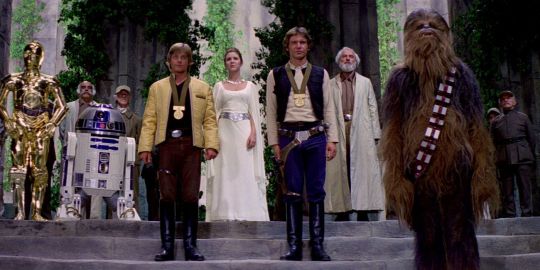
It's not exactly science fiction, although there are plenty of tabletop games that specialize in the genre, but a combination of sci-fi and fantasy known as space opera. This is where snarky descriptions of Jedi Knights as "space wizards" come from, and you can easily assign other D&D classes to the other characters, like Rogue or Barbarian. The question of whether Jedi are Wizards, Sorcerers, or Clerics could be a source of interesting debate.
The concept of a campaign that takes place in outer space, or even in a setting that features interdimensional travel, can follow a similar plot as the original Star Wars. The campaign could include a mentor, training, party formation, and working together for a common goal.
8 Ninja Scroll (1993)

Imagine a module that has elements like a secretive plot that the characters must team up to discover despite opposition from malevolent and supernatural forces, and that's essentially the plot of Ninja Scroll. The setting can vary, but a DM can take some inspiration from that as well since "medieval" doesn't always have the go with "European."
RELATED: 10 Greatest Fantasy Weapons in Film, Ranked
Ninja Scroll was part of the anime wave of the mid-1990s that brought on cyberpunk and psychological horror along with this movie, a chilling tale of ghosts and demons from Japanese history. At the time it was a unique example of an anime film that took place in the past as opposed to a movie about the future.
7 The Last Unicorn (1982)

A book that's been successfully adapted into a movie can also be adapted into a campaign. For players that are more concerned about character development and roleplaying, especially as it relates to class progression, The Last Unicorn is the ideal inspiration.
The quest and plot are simple, relying more on the interaction between the characters than any complex storyline. Players and DMs alike can see where archetypes come from and how they can be subverted, different ways that character progression can work, and how they are combined as part of RP in gameplay.
6 Conan The Destroyer (1984)

The first Conan movie could also be in this space, but the oft-overlooked sequel, Conan The Destroyer, has a much better party dynamic.
Conan, of course, a Barbarian, is joined by a Cleric, a Druid who might be a Fighter multiclass, a Monk who might be a Barbarian herself, and of course his sidekicks from the first movie, the Rogue and the Wizard. They're on a quest to find a magical artifact for a queen who seems to be Neutral Evil so she can resurrect an old, angry god. If there's not a D&D module for this already, there should be.
5 Spirited Away (2001)
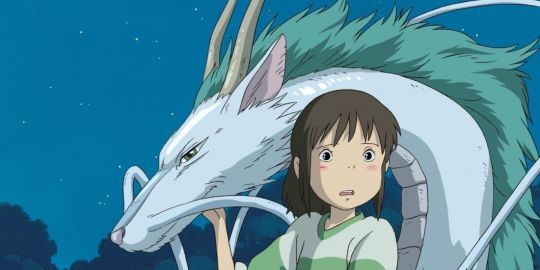
Sometimes a whole module can take place in a relatively small space, like a castle keep, a large house, or a prison compound. This movie is more about creating and playing in a unique and perhaps enclosed setting since there's little to see regarding party dynamic with one character being the focus of the plot and action.
RELATED: Spirited Away: 10 Ways It's Actually A Horror Movie
The enchanted bathhouse of the witch Yubaba is where most of the action takes place. DMs will appreciate the detail and difference that each of the various levels has, with the lower levels furnished for public viewing and the upper levels for employees and Yubaba's private quarters, with the addition of secret routes along the perilous exterior of the massive building.
4 Ladyhawke (1985)
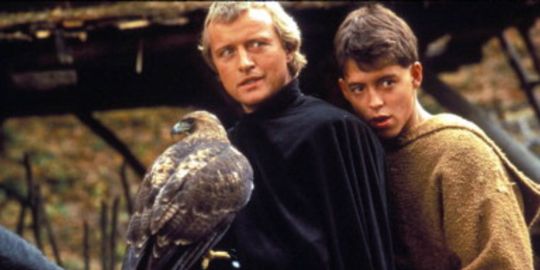
The quest still has to be at the heart of any D&D campaign and that's also what makes Ladyhawke such a great movie when DMs and players need inspiration. Every good D&D campaign needs a plot, which is the quest, along with a realistic antagonist complete with minions and magical powers.
That's not to say a few interesting characters are included, and they have some interesting arcs, for those interested in character progression. For example, the main character, Philipe, is a Rogue who seems to take a turn towards multi-classing into a Cleric as the story comes to a close.
3 Dragonslayer (1981)

This one seems too obvious at first, and the script plays on those fairytale tropes on purpose only to surprise the viewer later. Although Dragonslayer is missing a lot of that essential party dynamic, the main character has an interesting mentor and character arc, thus it's more useful to players when it comes to putting together a good backstory than building the ideal campaign.
However, what seems like a typical story ends up subverting some old archetypes in clever ways, and a good D&D campaign would find some ways to do the same.
2 The Dark Crystal (1982)
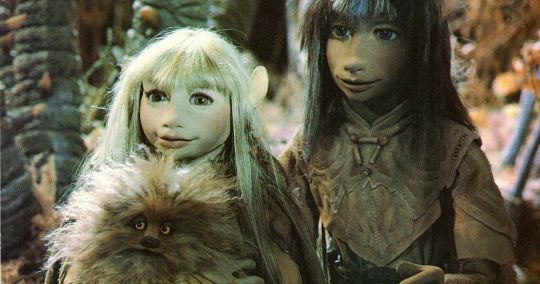
A unique setting can make a simple, even stereotypical storyline a lot more interesting. The journey starts with the search for and the acquisition of a magical item that must be delivered to a precise location, complete with a ticking clock, which is also a nice plot for a DM to guide the party through.
RELATED: 10 Fantasy Movies That Were Groundbreaking For The Genre
Aside from all that, there's a wealth of details in The Dark Crystal for those that are interested in designing a unique campaign with a lot of lore, which includes creative destinations and compelling villains with interesting backstories. It's also an interesting example of progressing through a campaign where one player starts on their own, with a brand new character, and grows their party as their initial quest progresses.
1 Guardians of the Galaxy, Volume 2

The first movie was more about how Star-Lord and his gang initially got together, a story that's useful for beginners, so Guardians of the Galaxy: Vol. 2 for players and Dungeon Masters that want some inspiration for more advanced characters. These are gamers from both sides of the table who have already formed a solid party dynamic and are ready to face a more formidable challenge.
It's also a nice twist on the conventional fantasy genre, with a variety of settings that include Ego's planet and some creative space monsters, including the final boss himself. All of this is set up with some easy-to-follow character progression, and if viewers are paying attention, there are Barbarians, Fighters, and Rogues aplenty if players that favor those classes need inspiration for their own individual gameplay.
NEXT: 10 Pro Tips To Running A Large DND Group
10 Best Fantasy Movies That'll Inspire Your Next DnD Campaign from https://ift.tt/3v2cKK0
2 notes
·
View notes